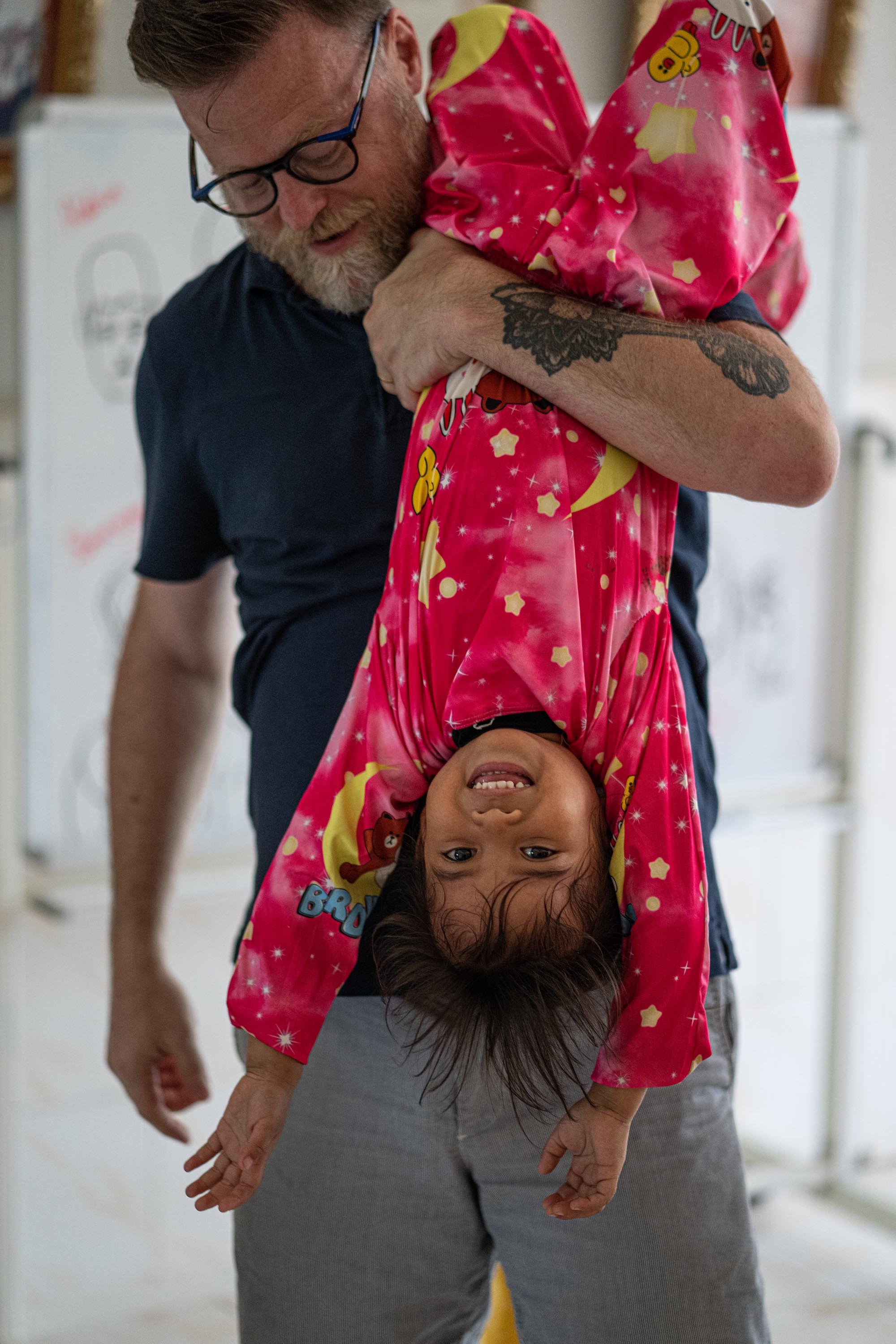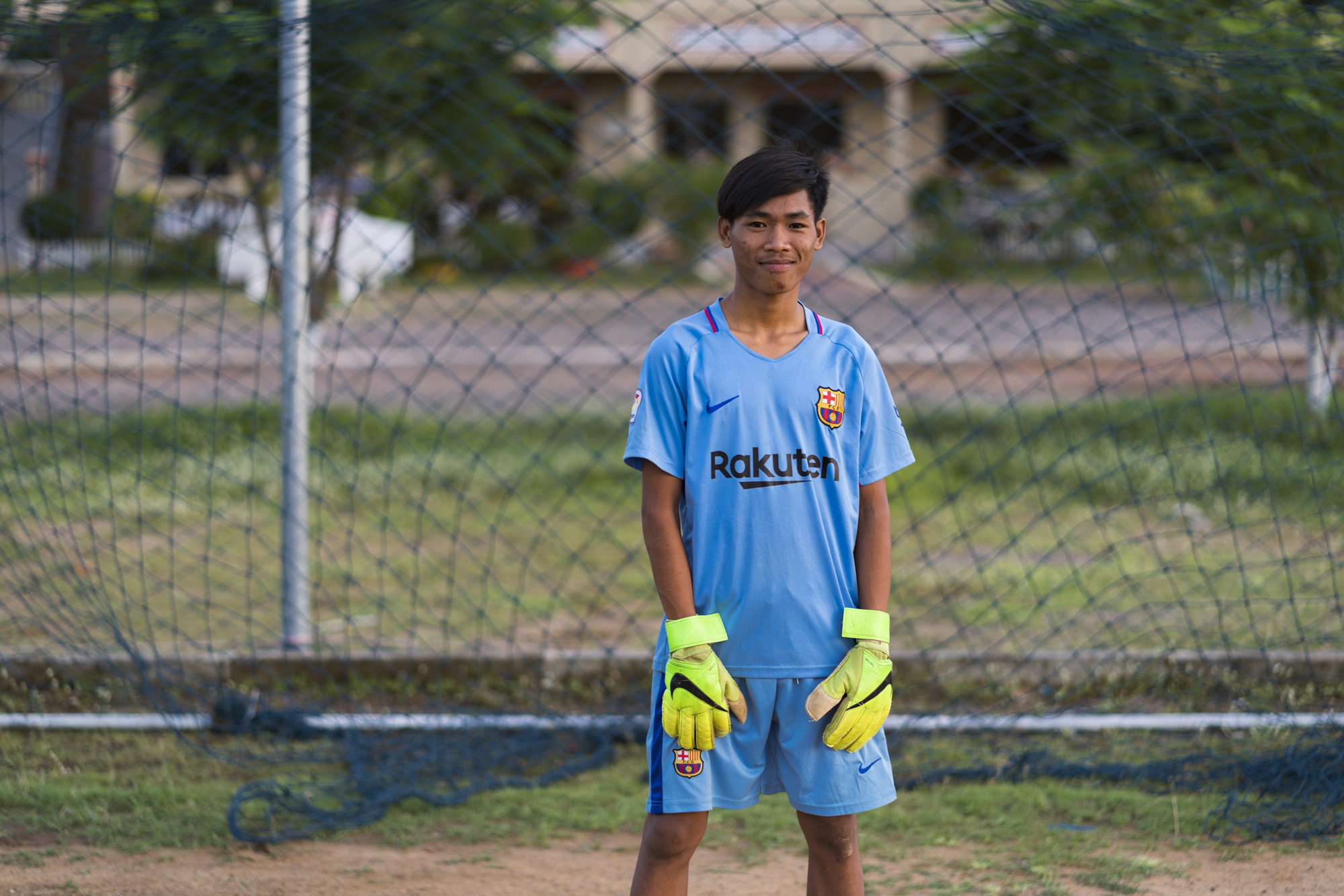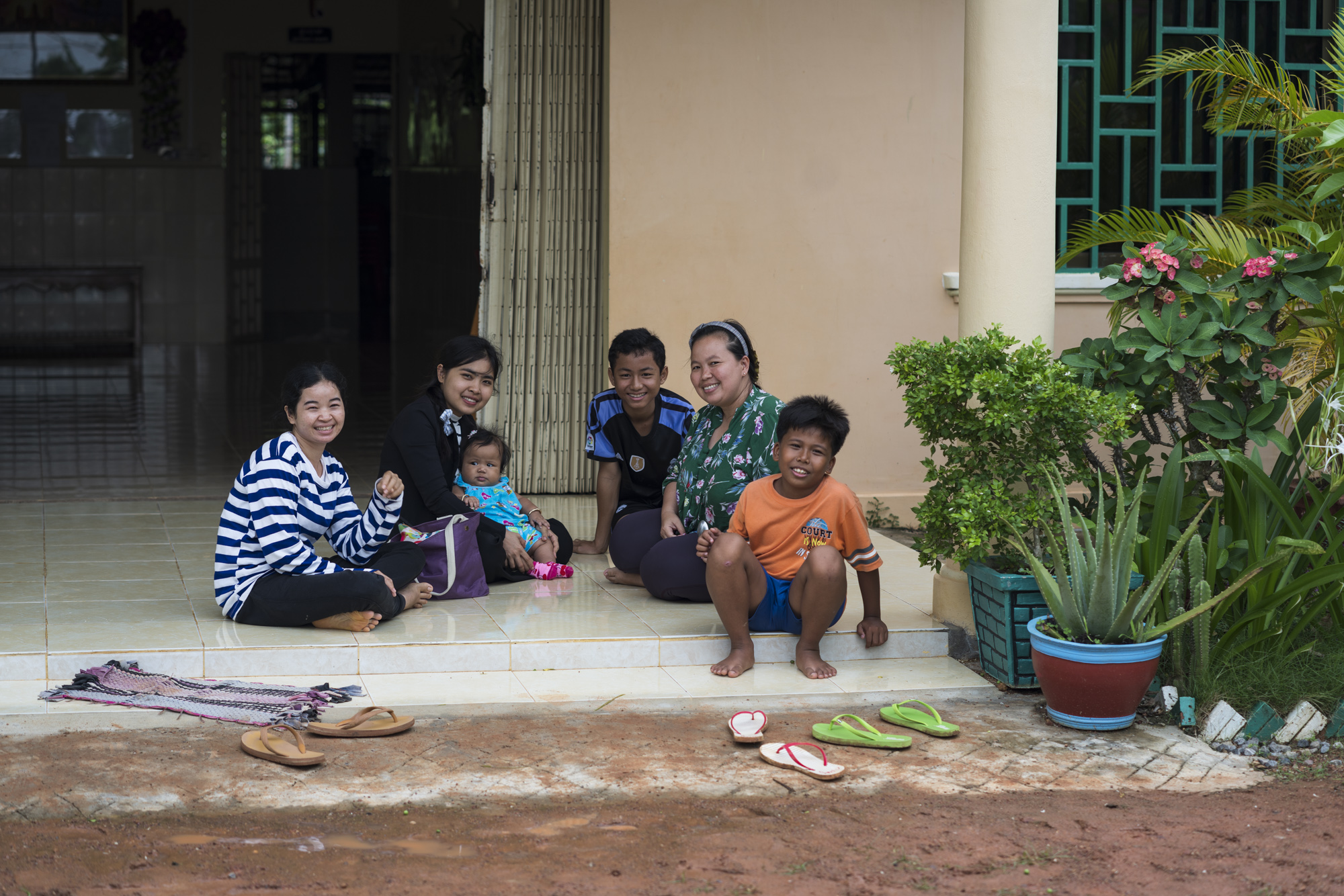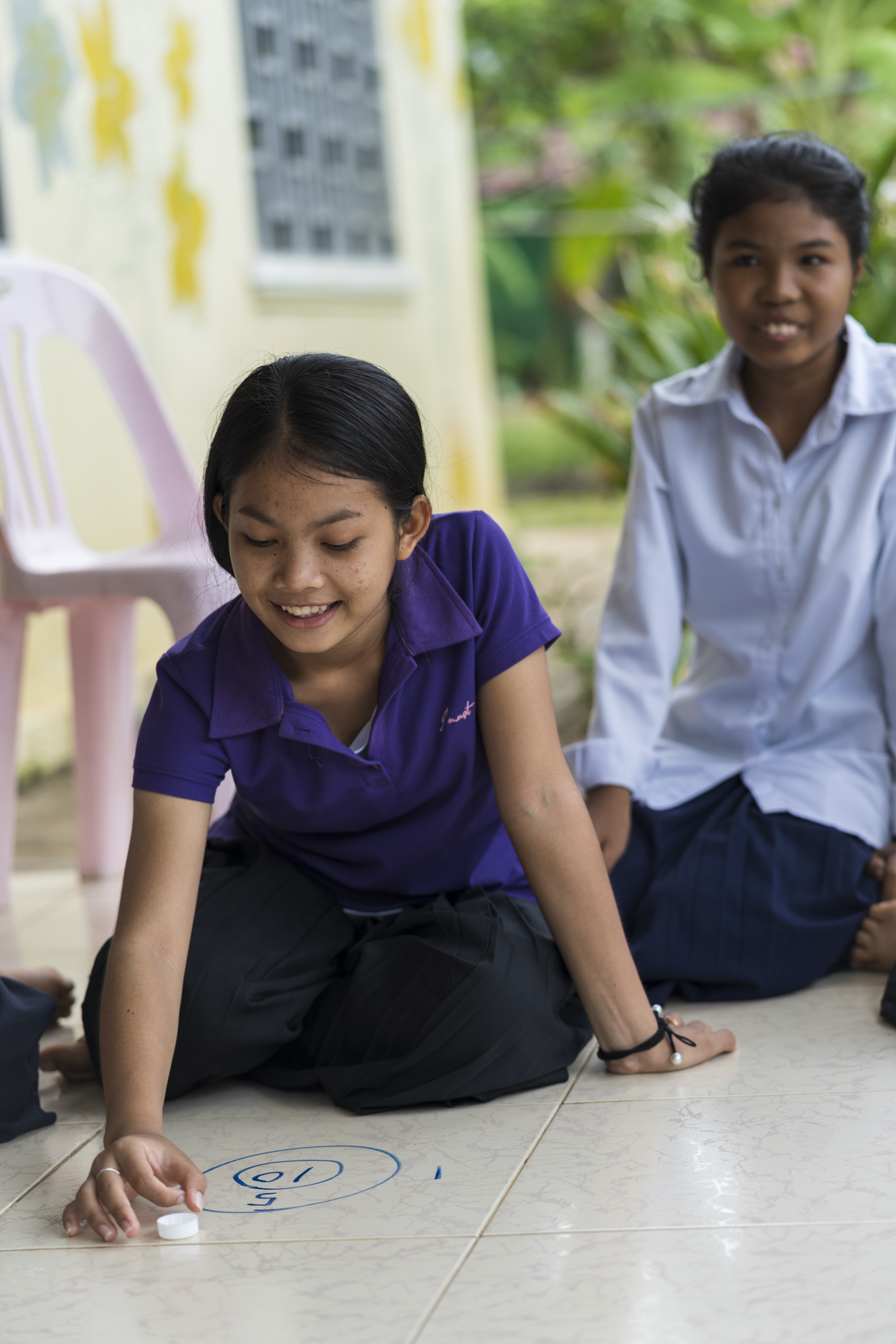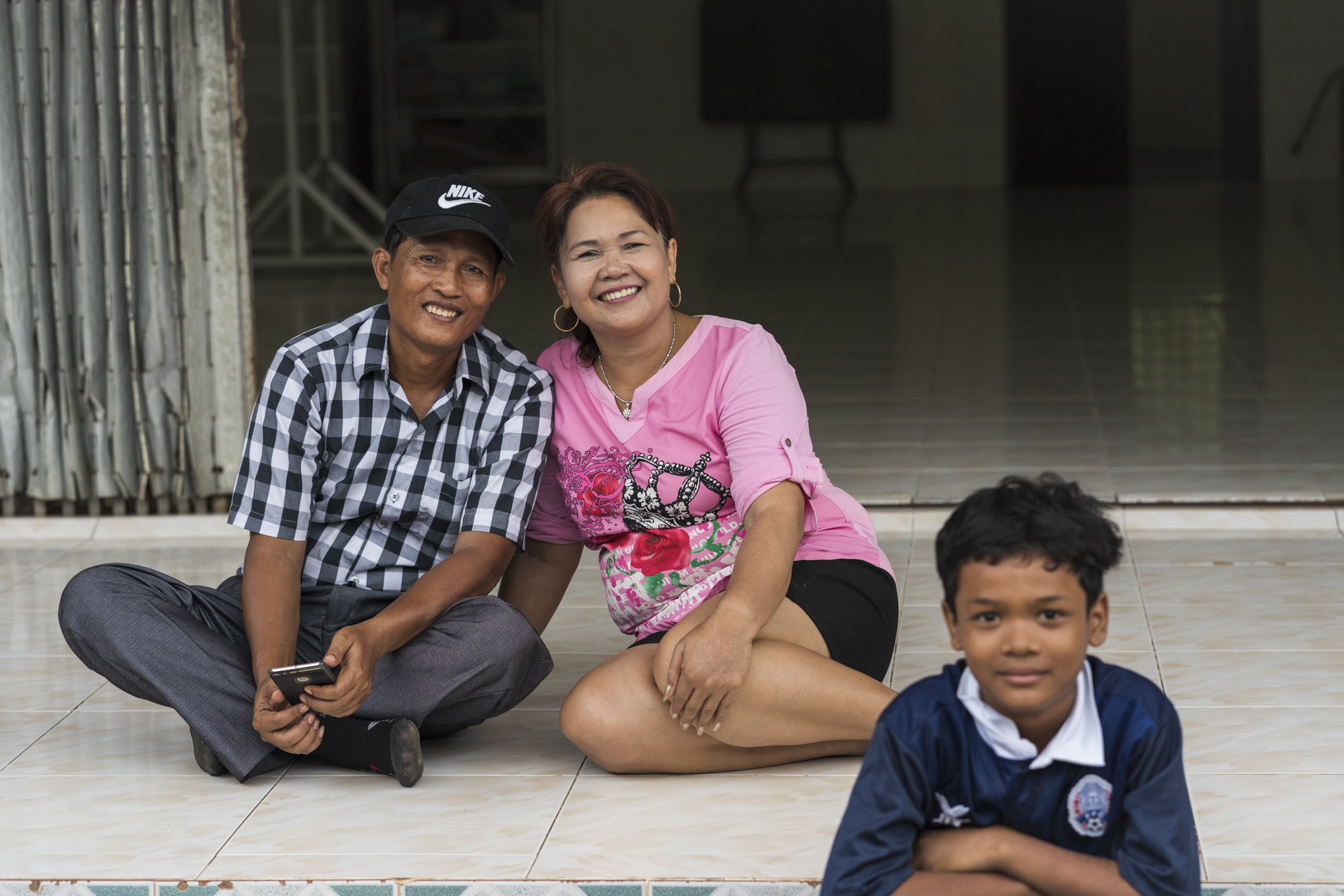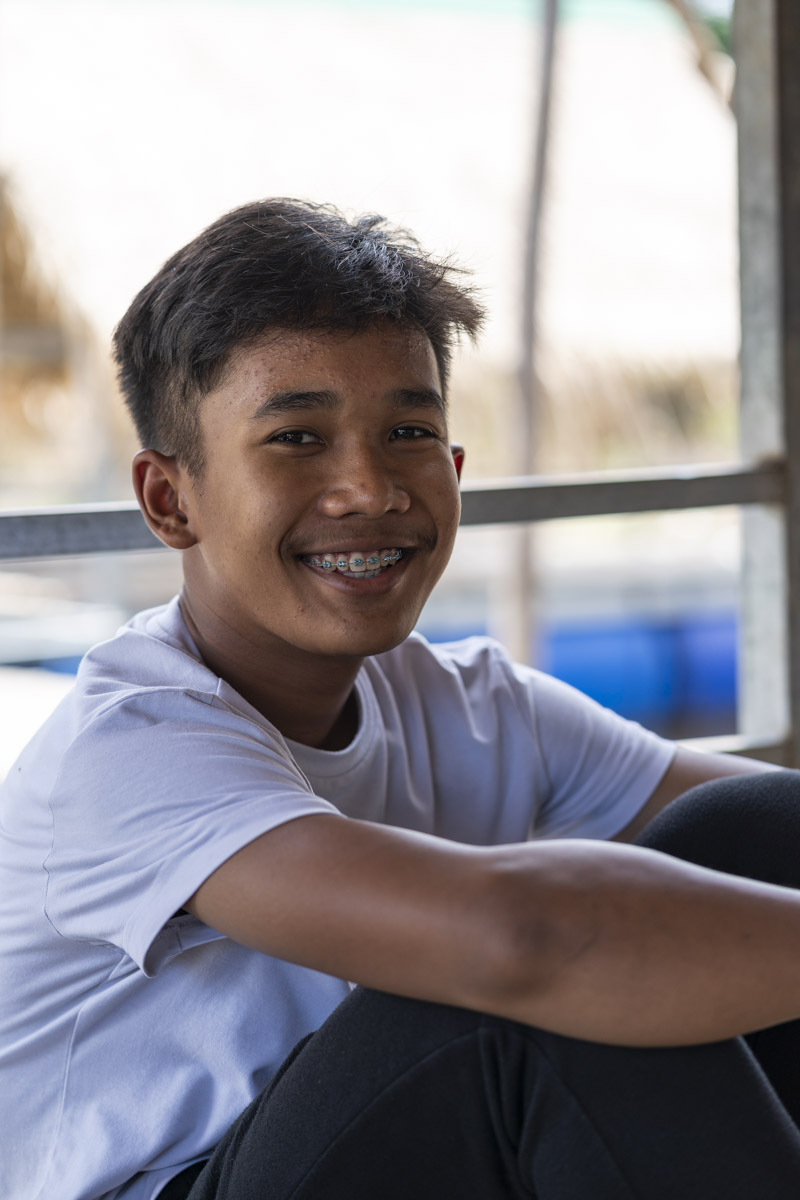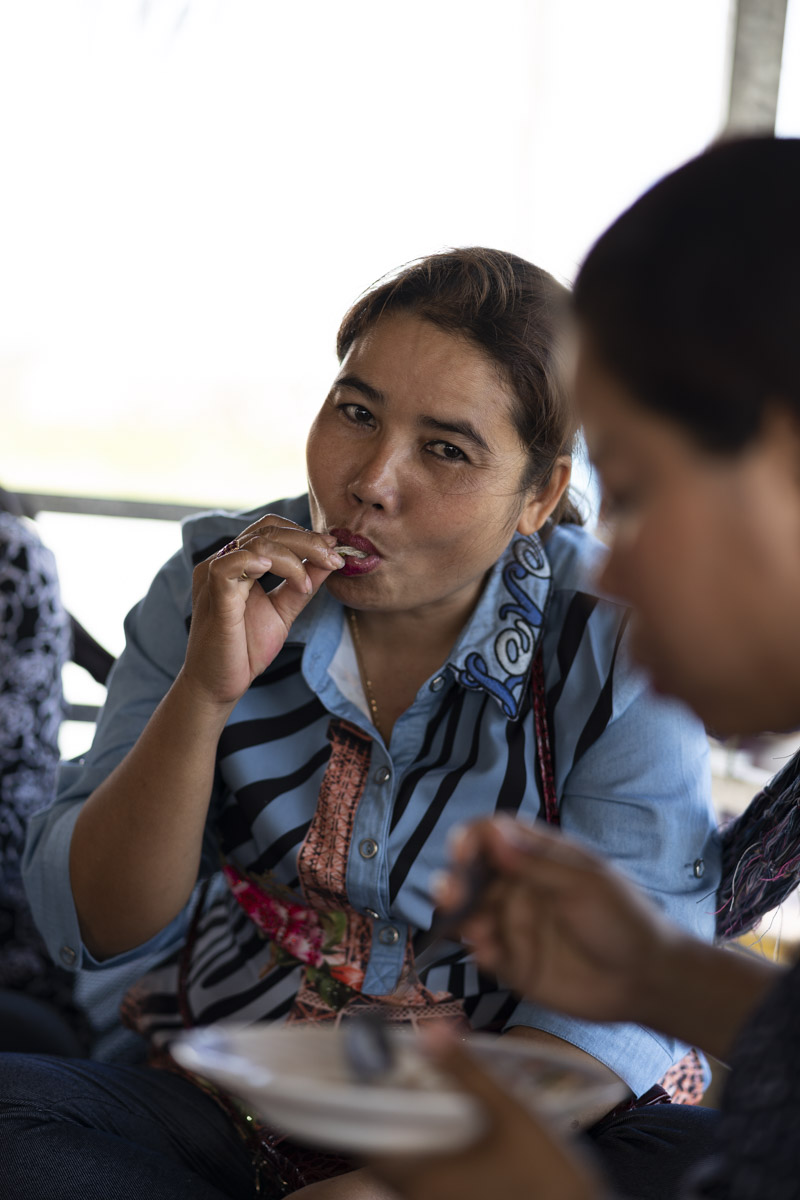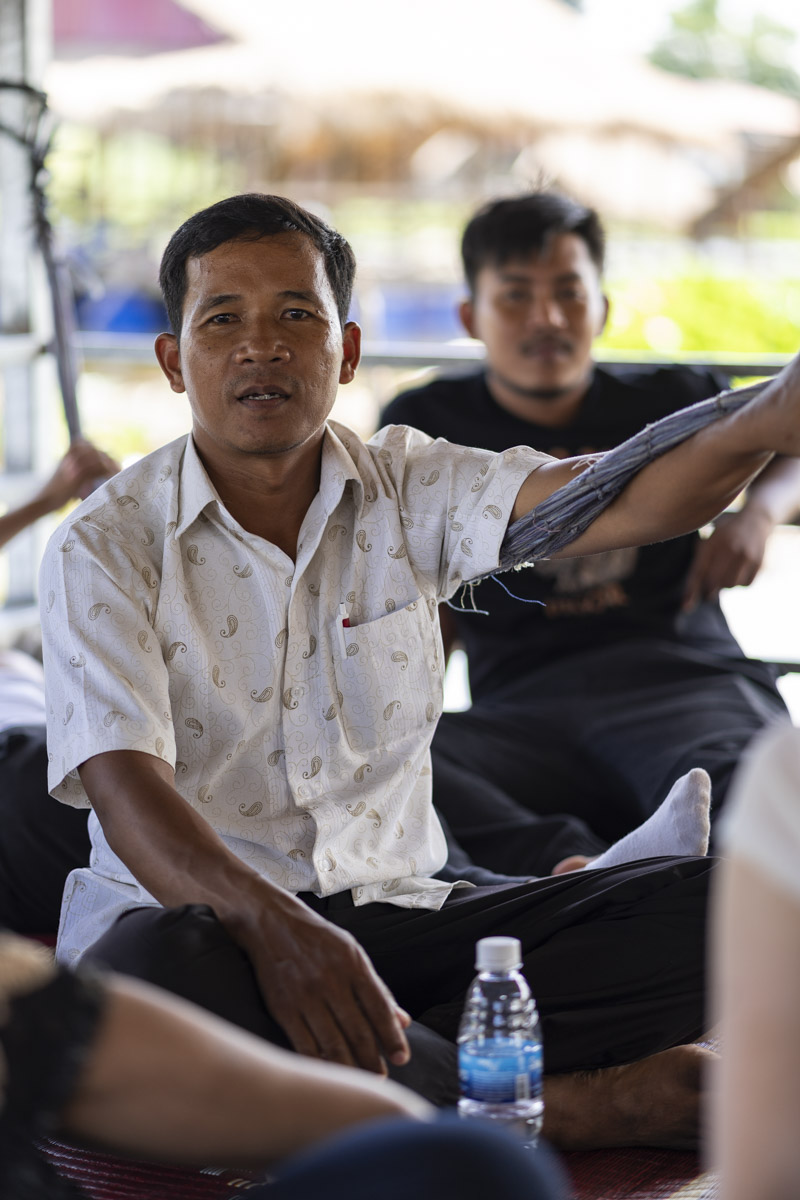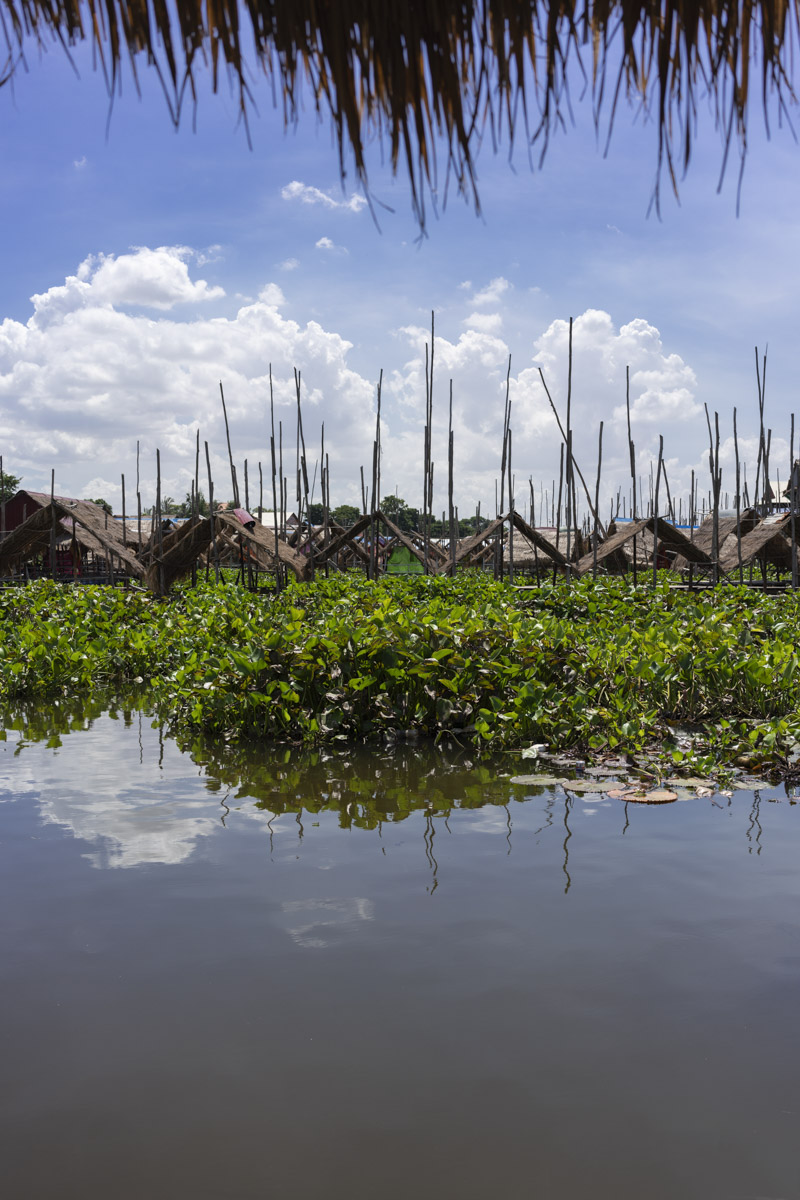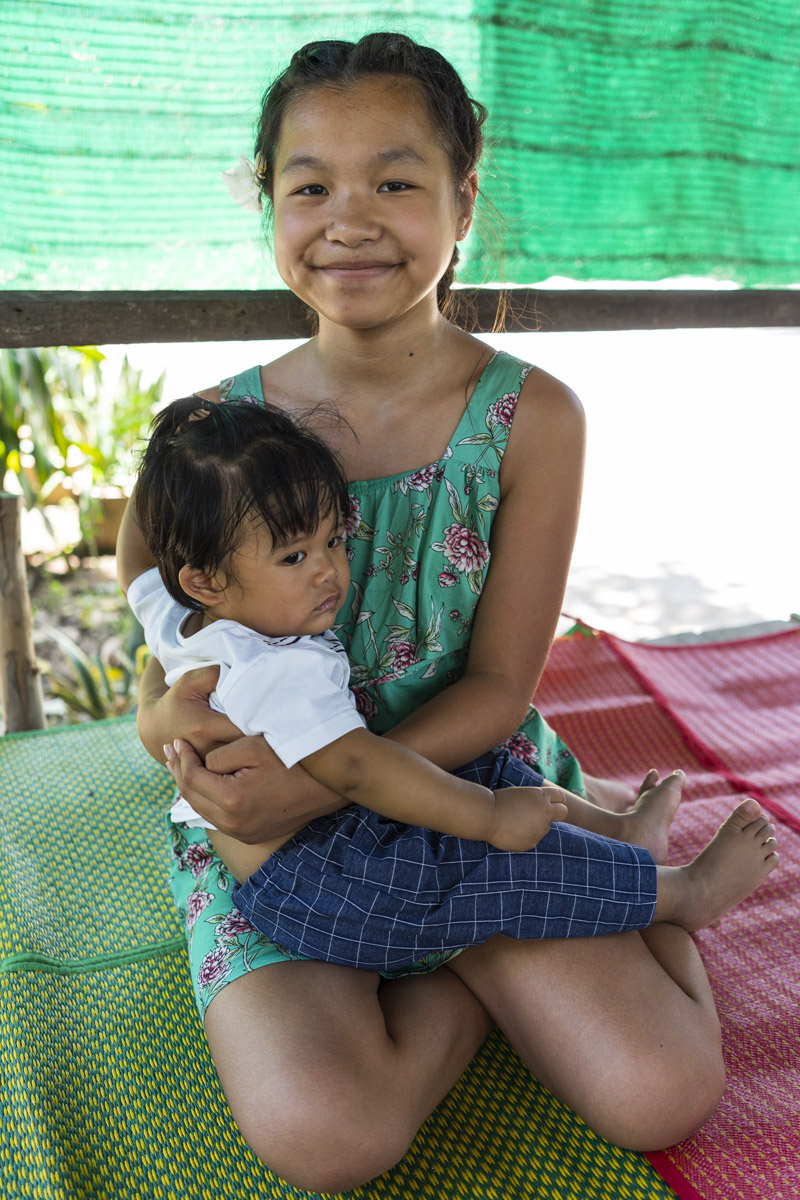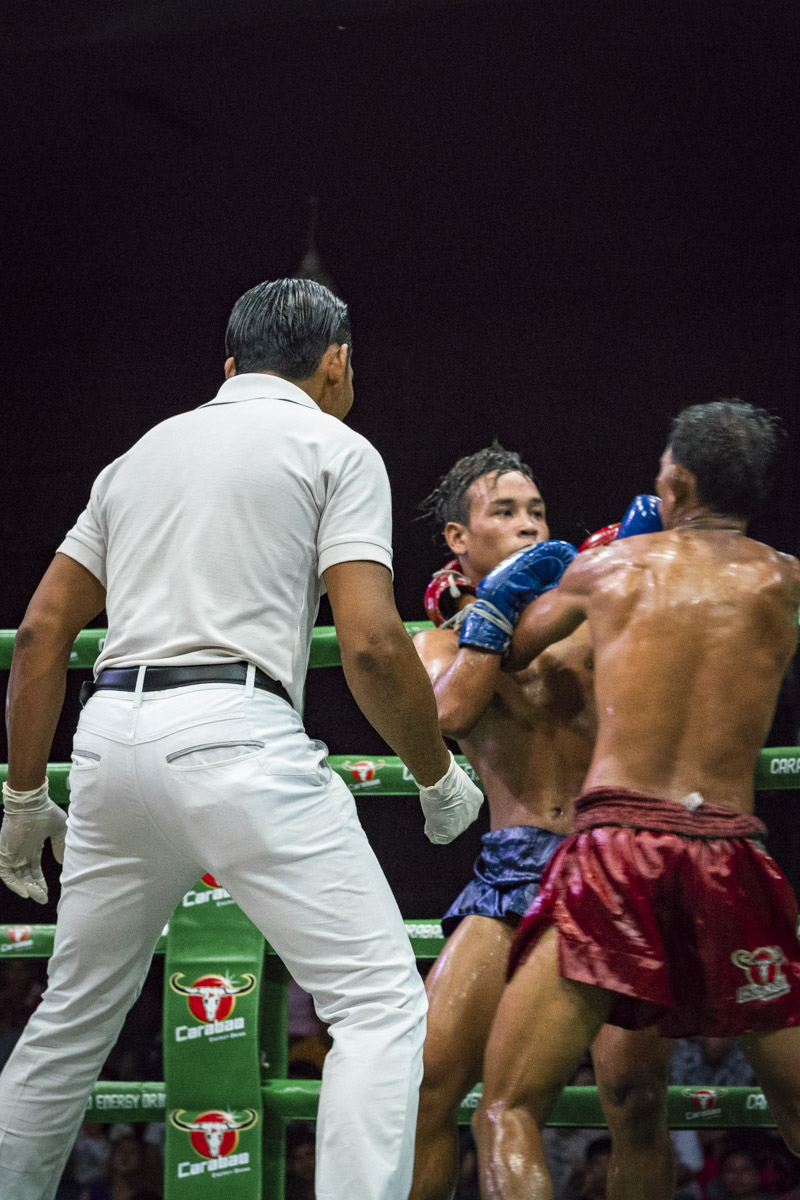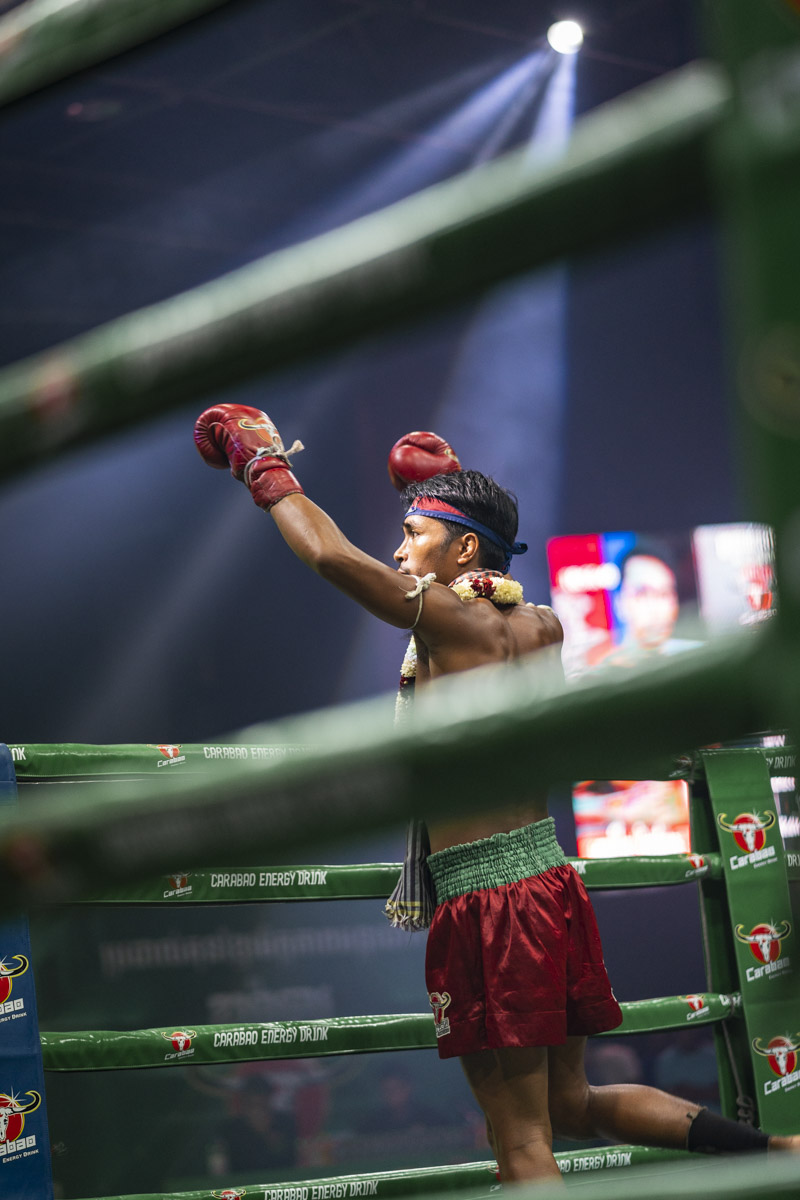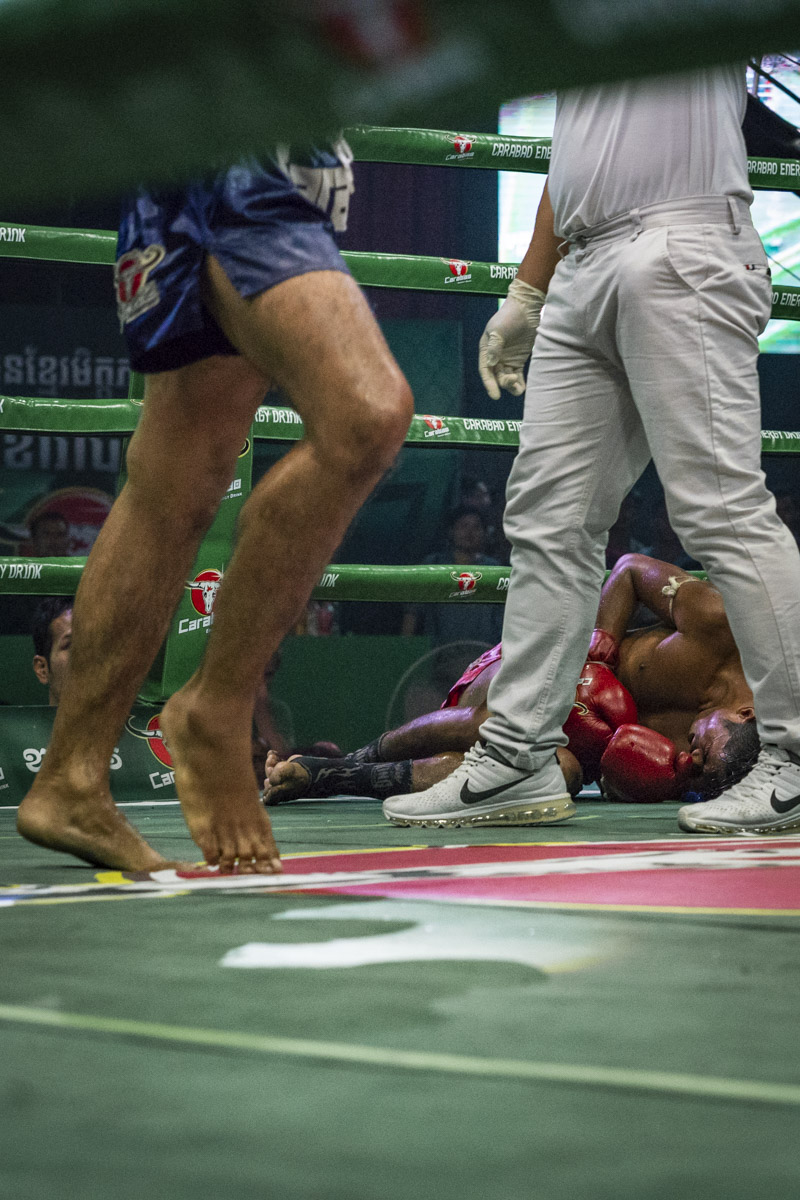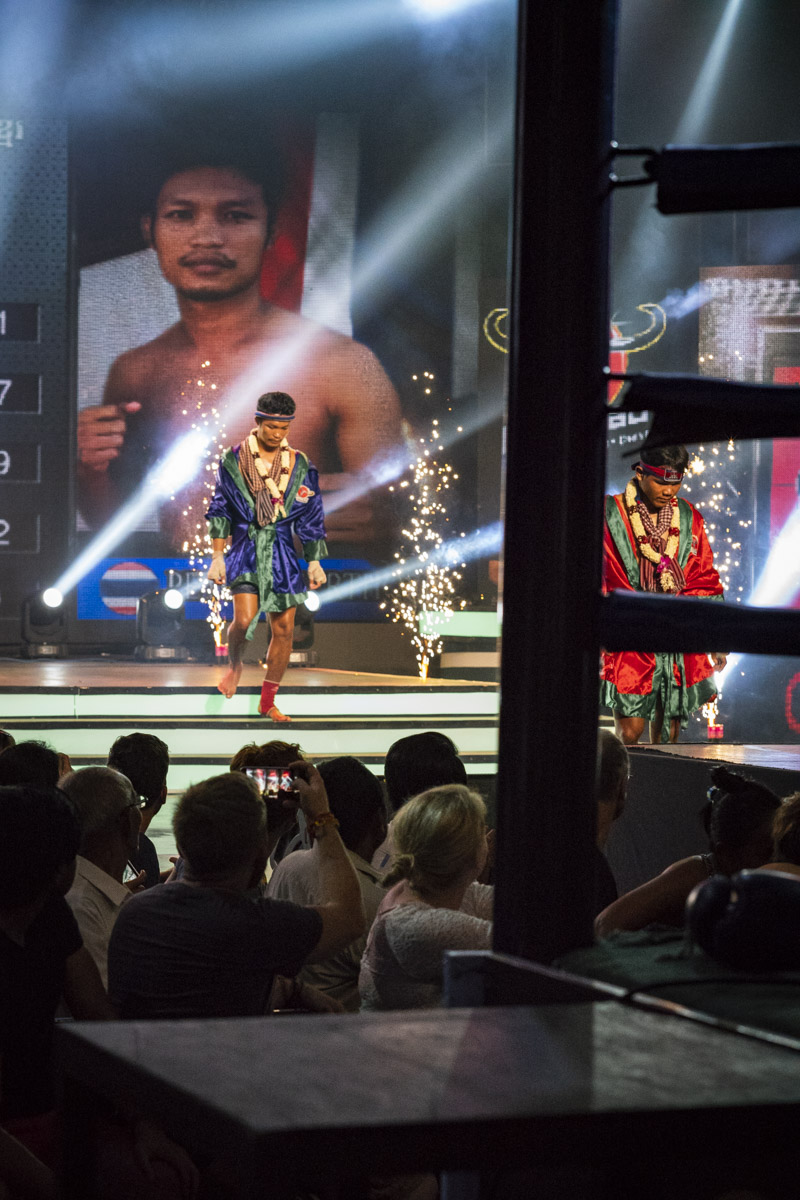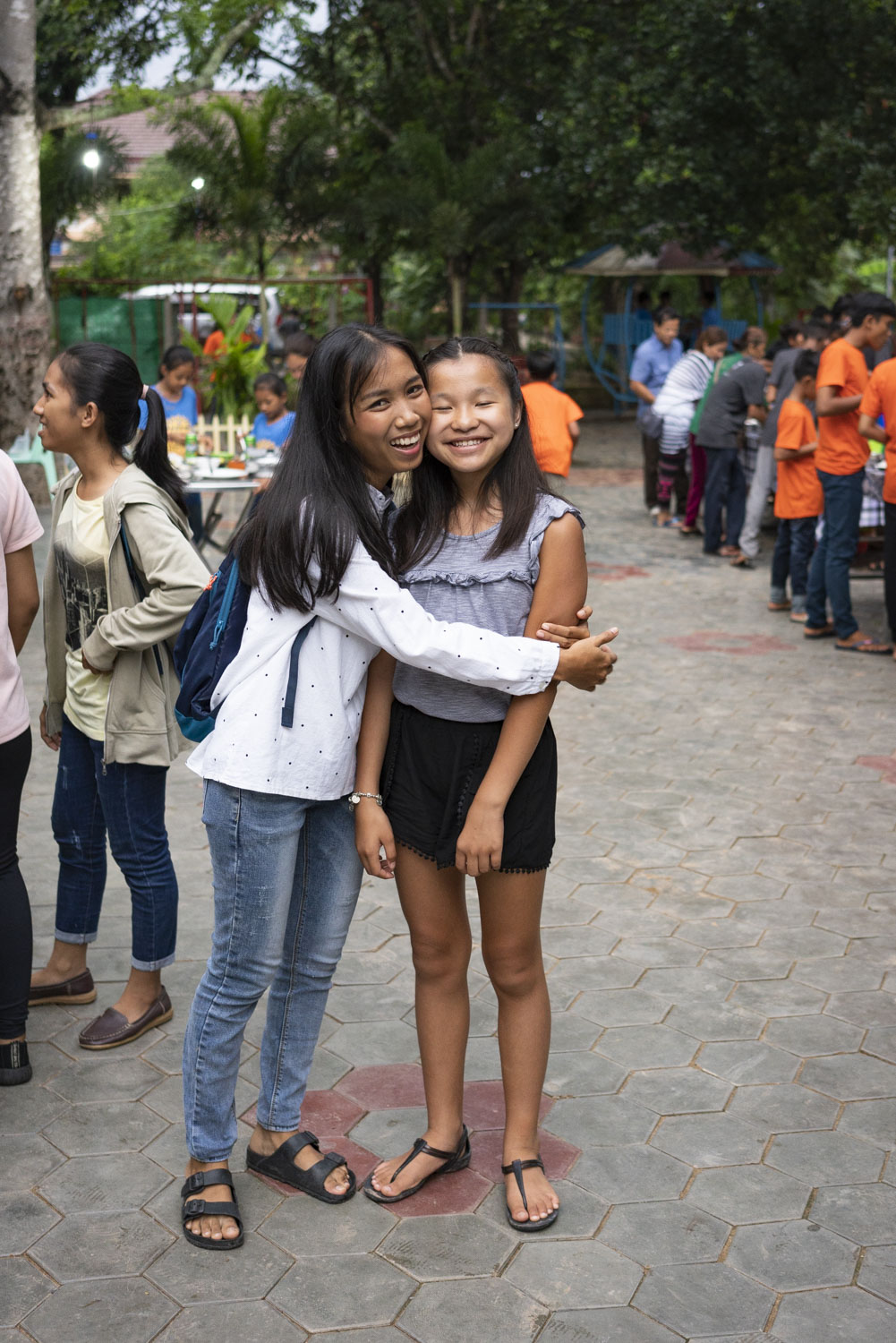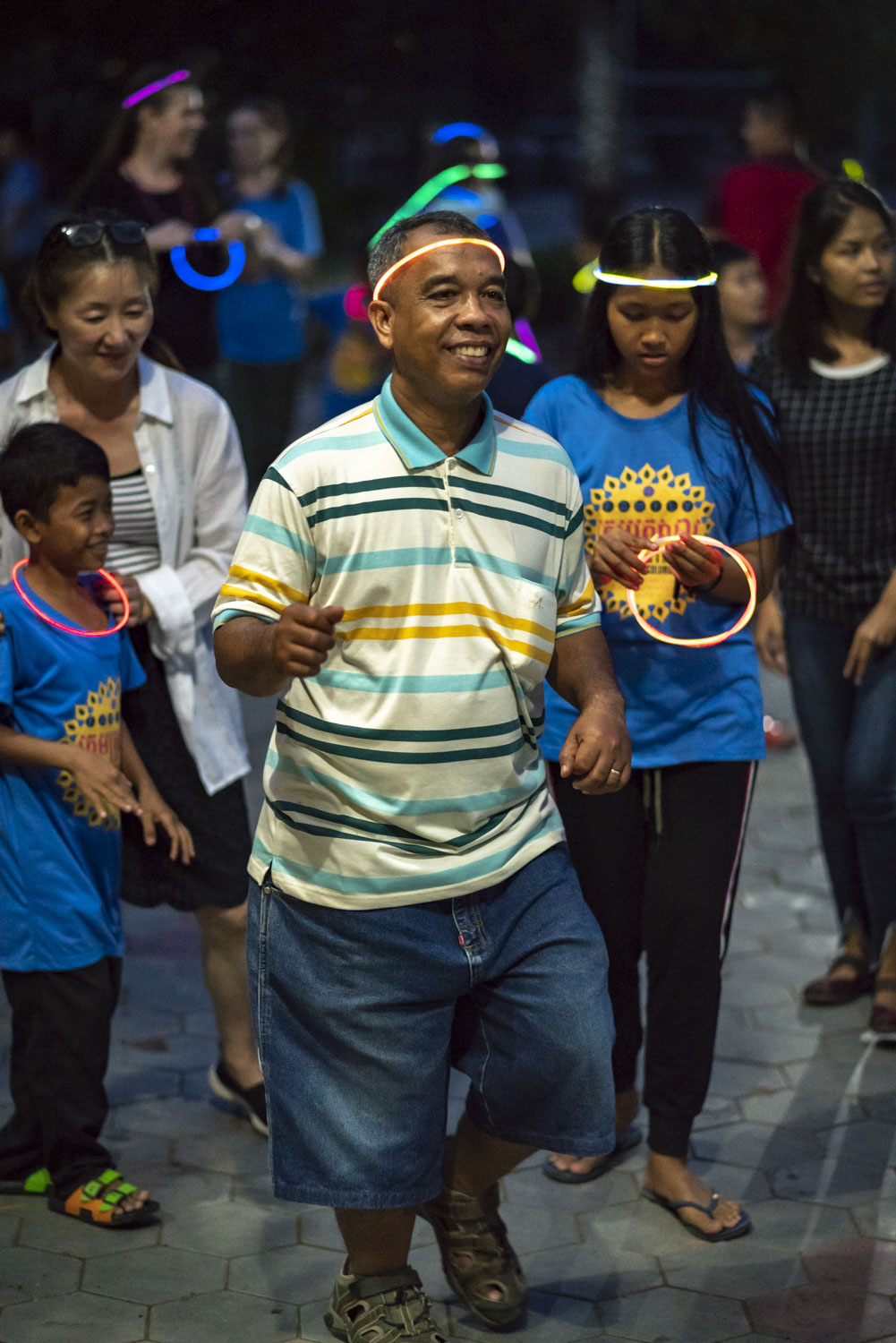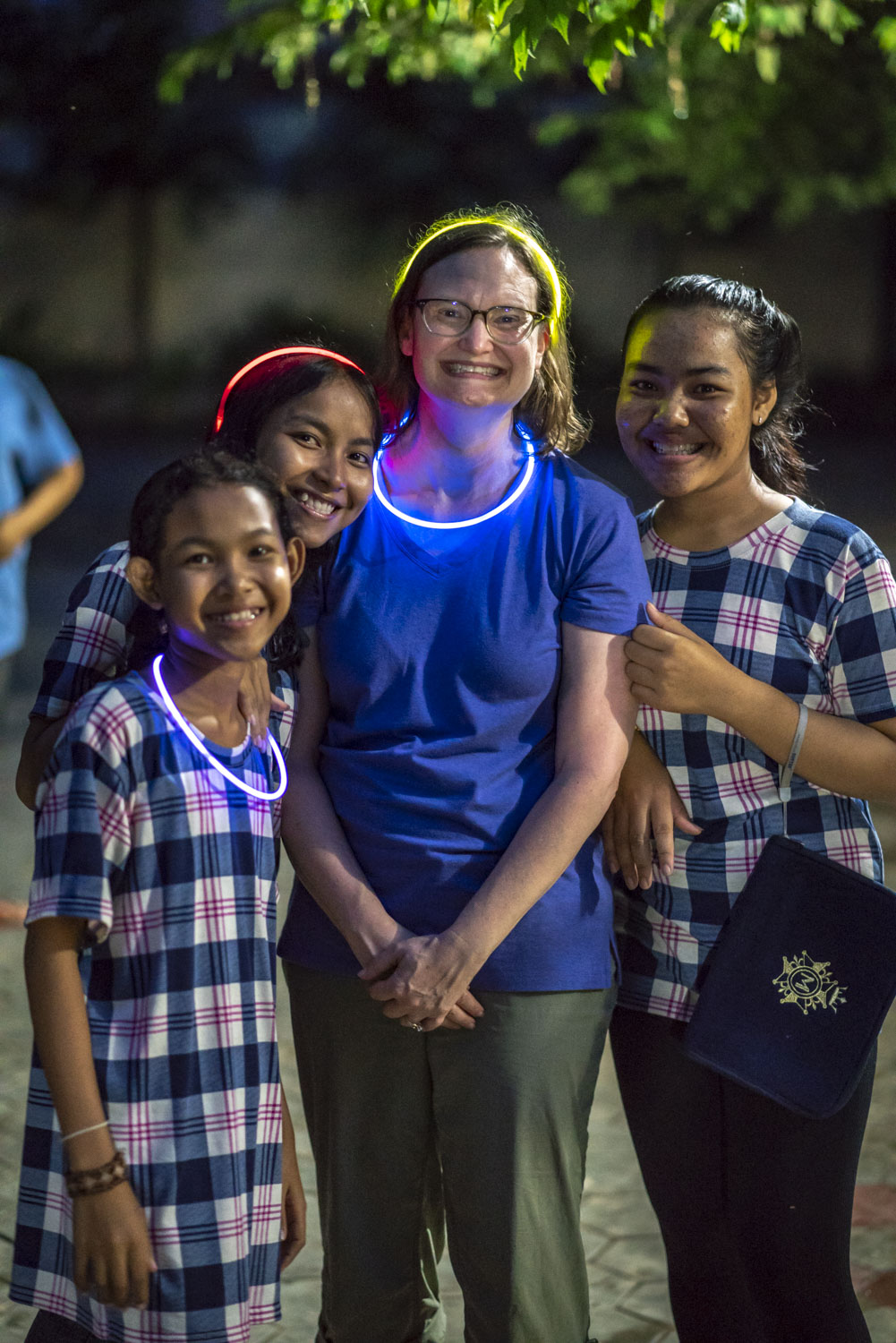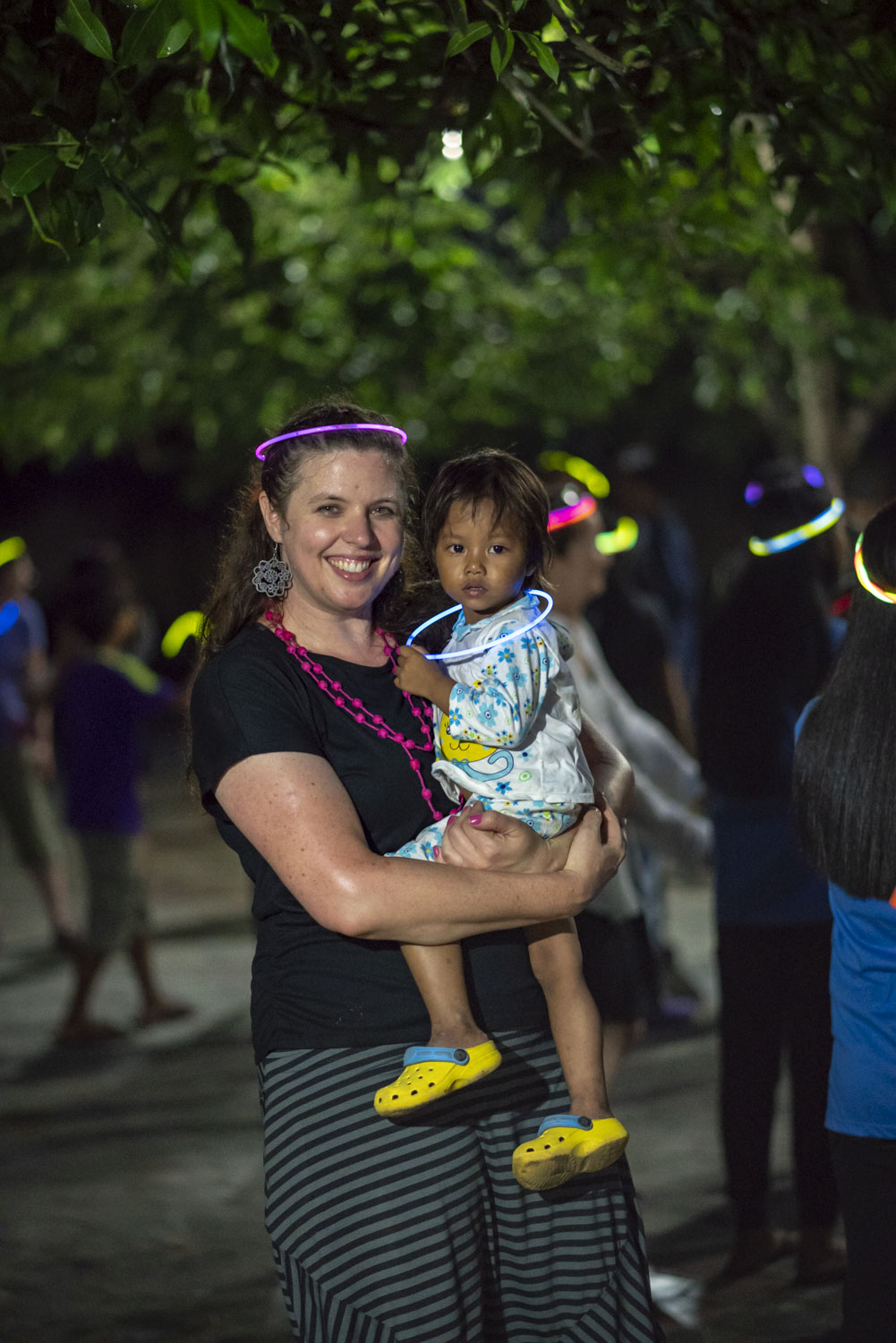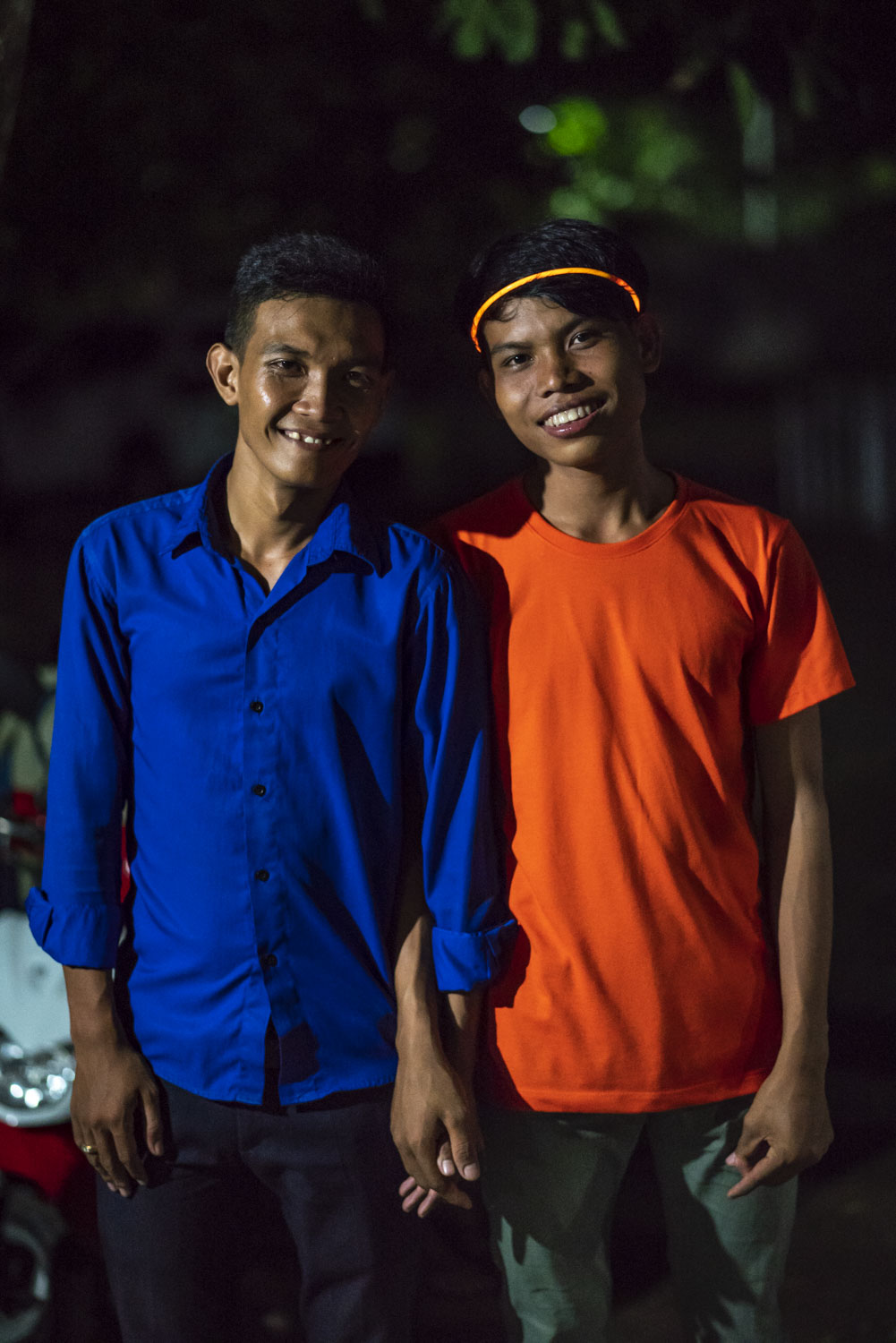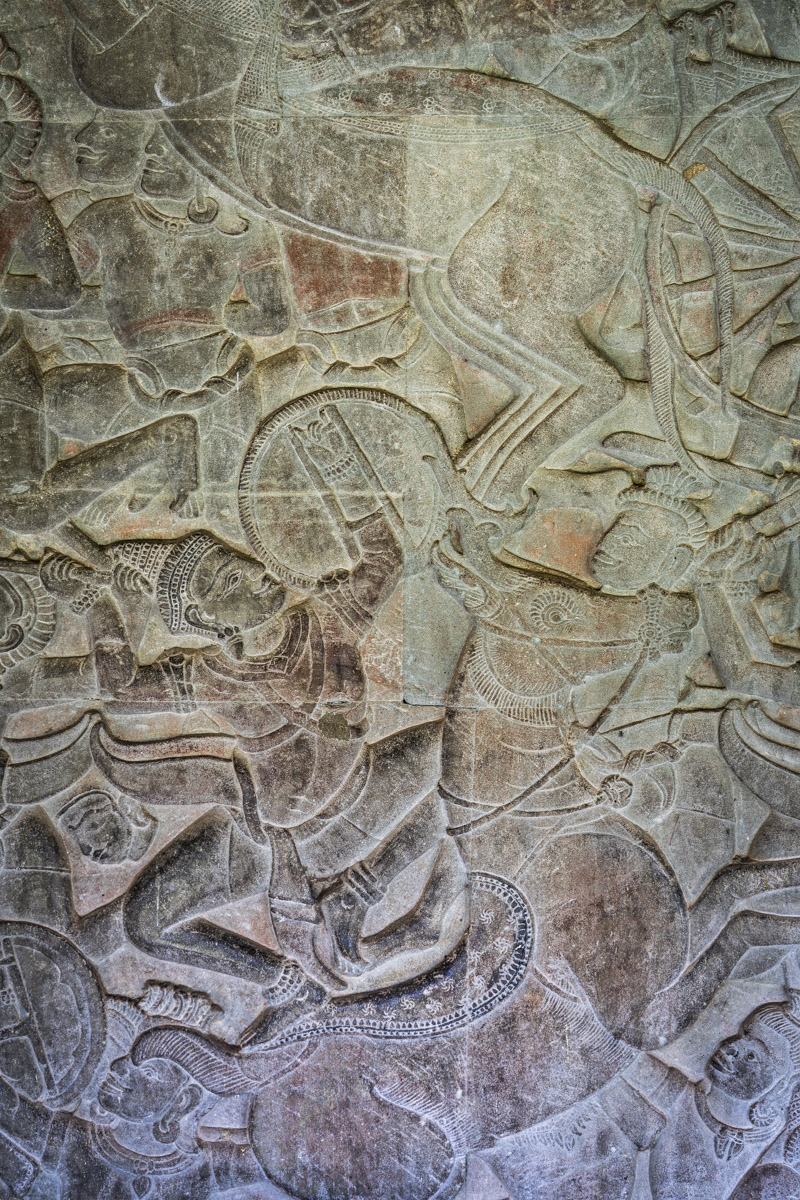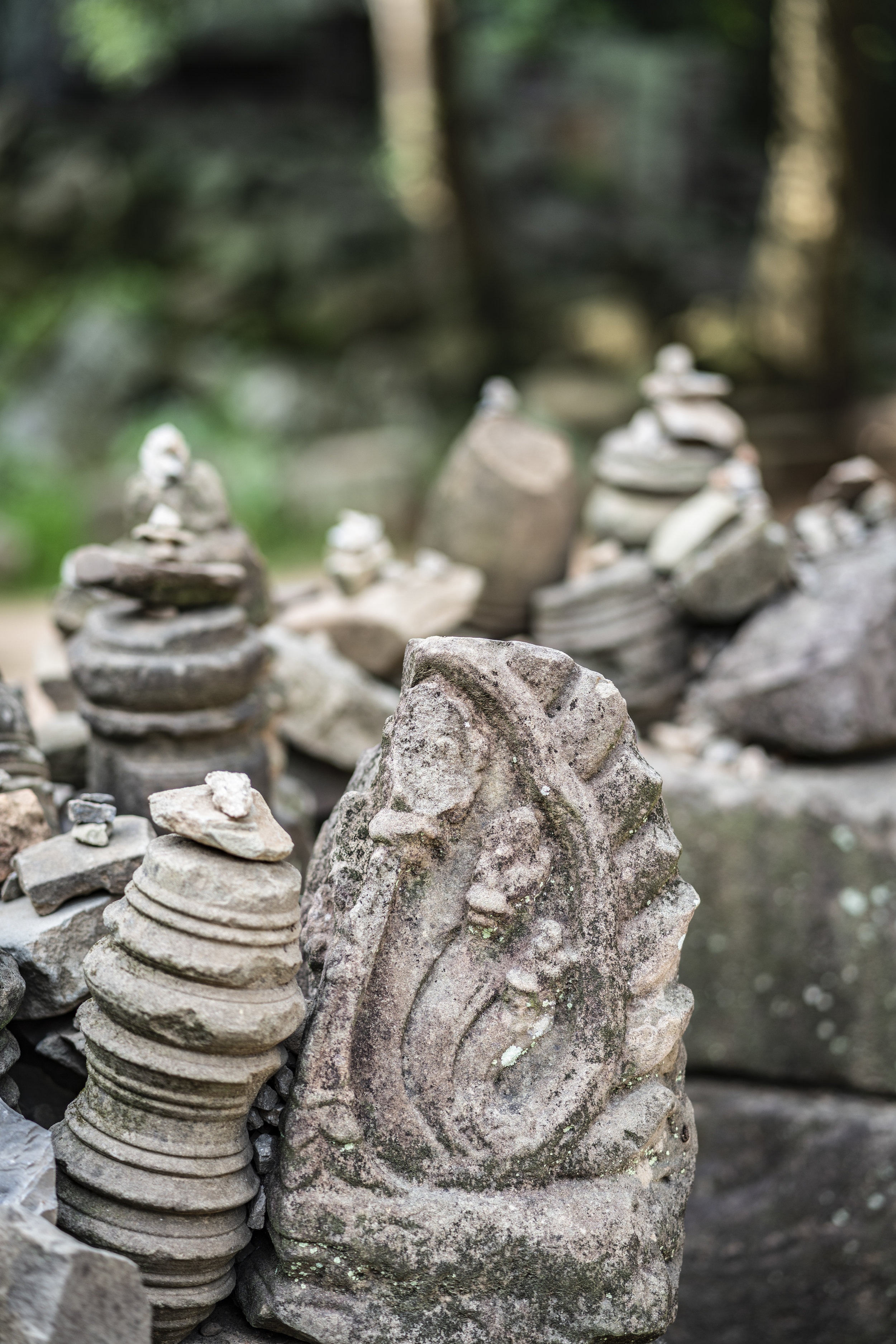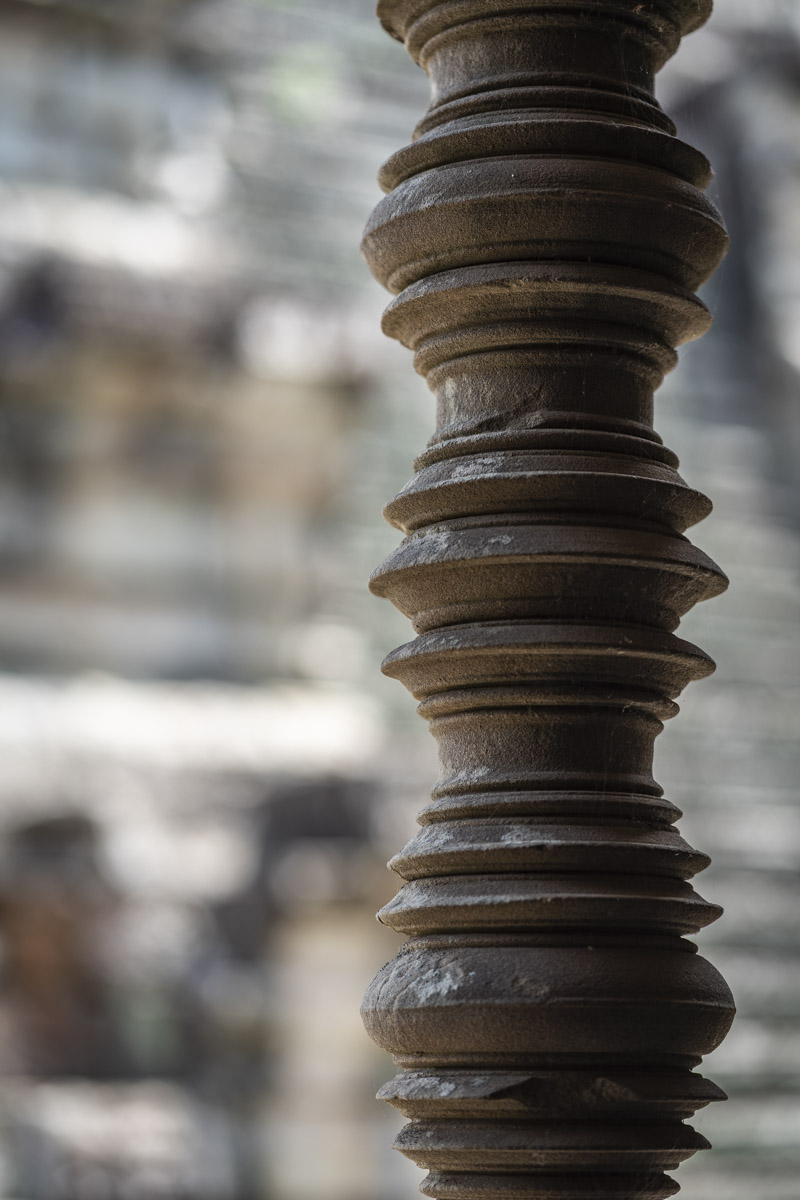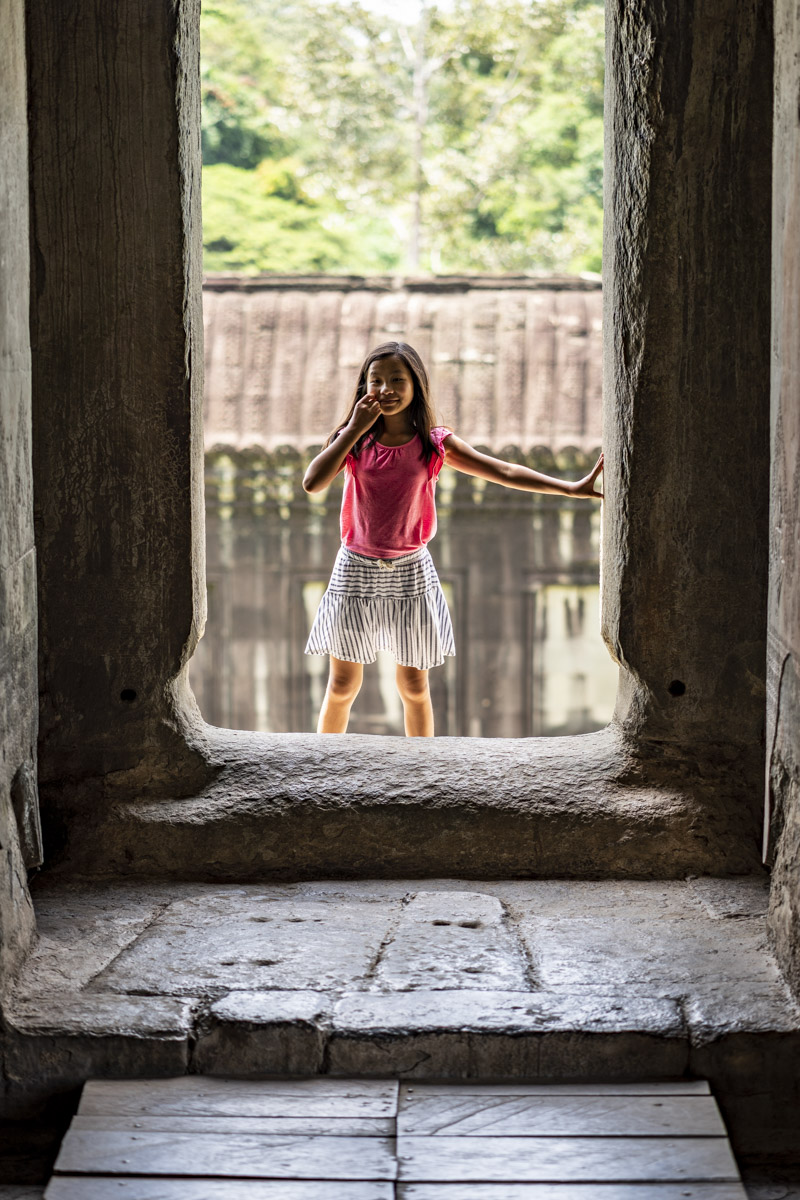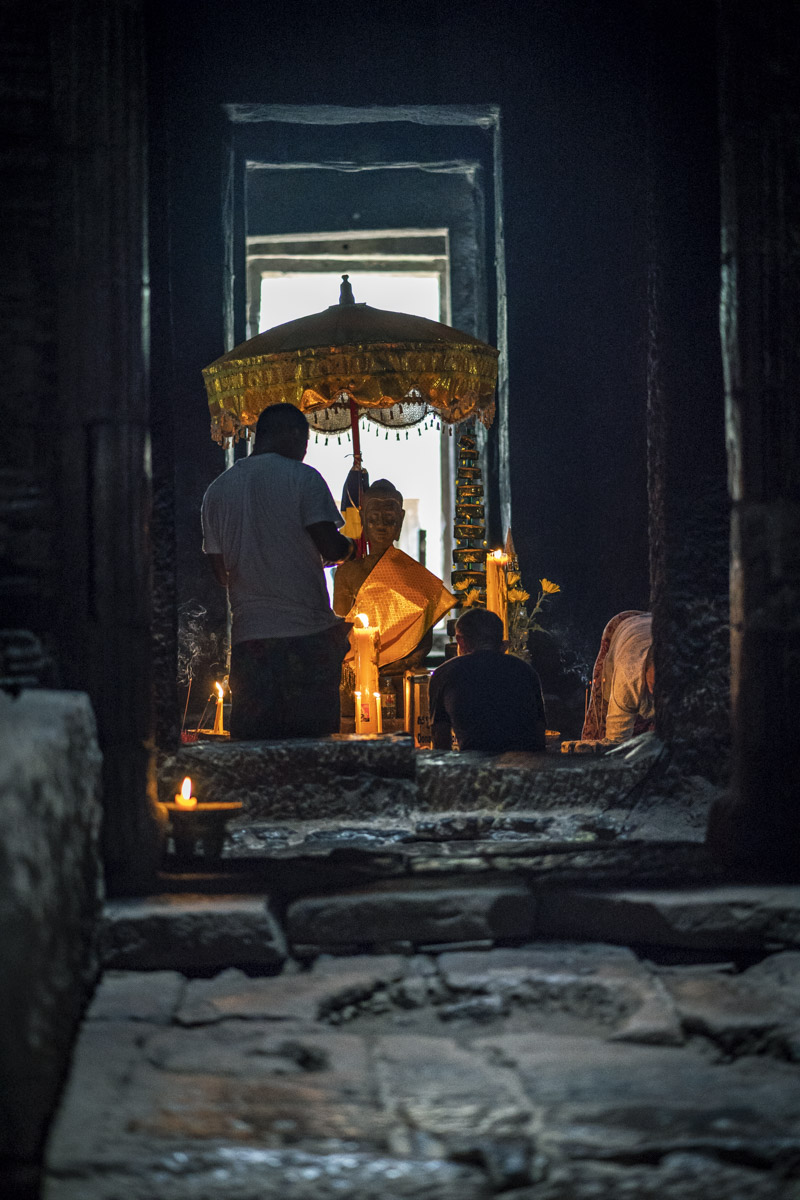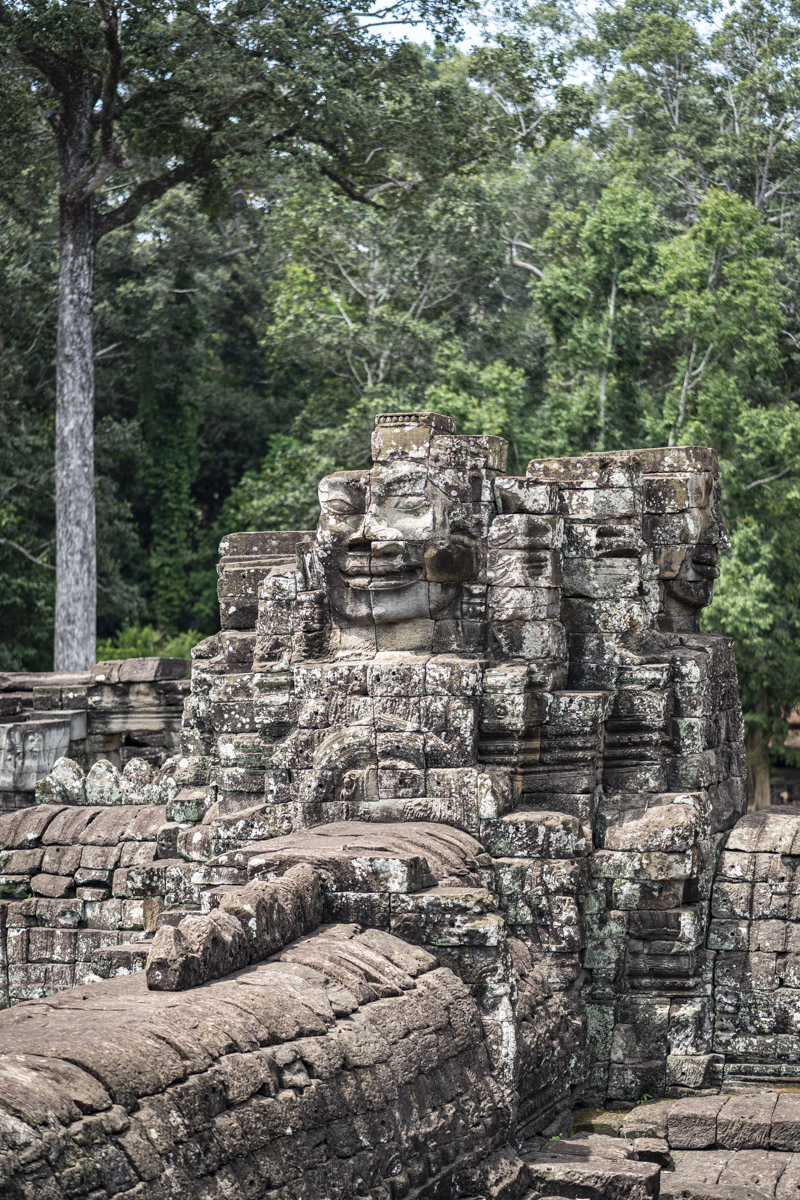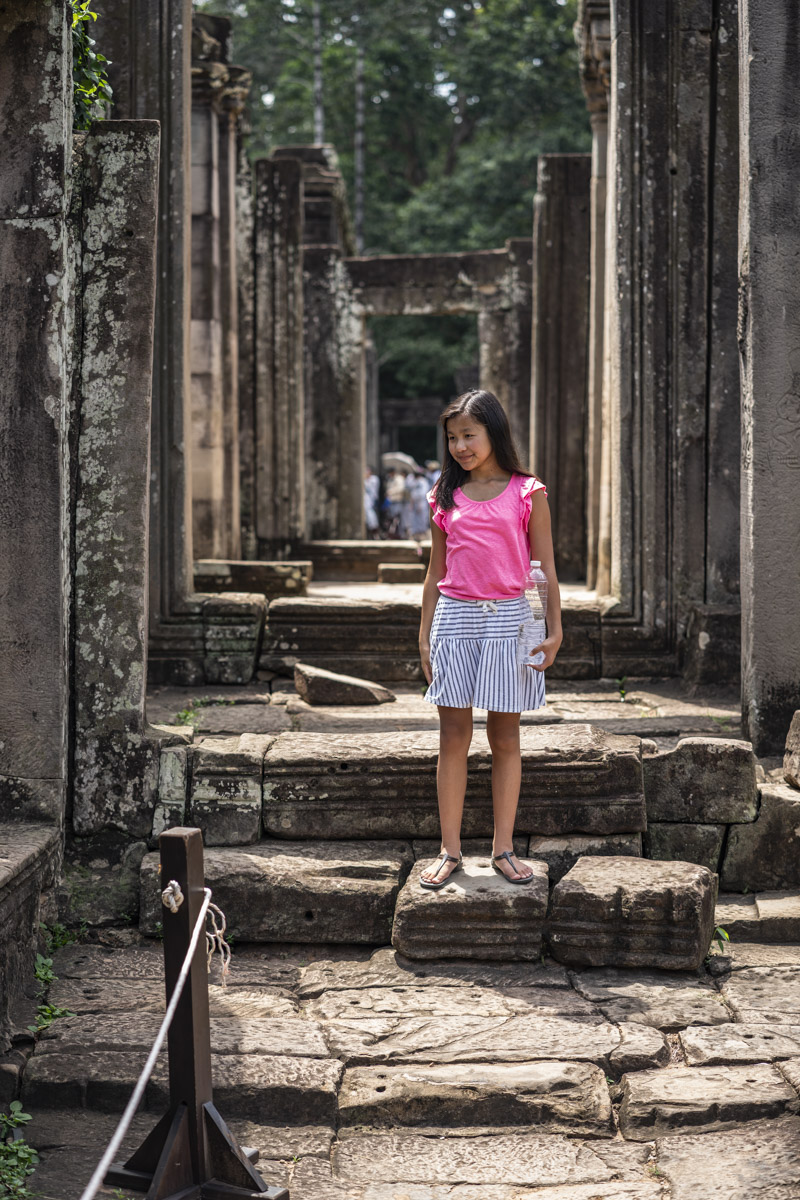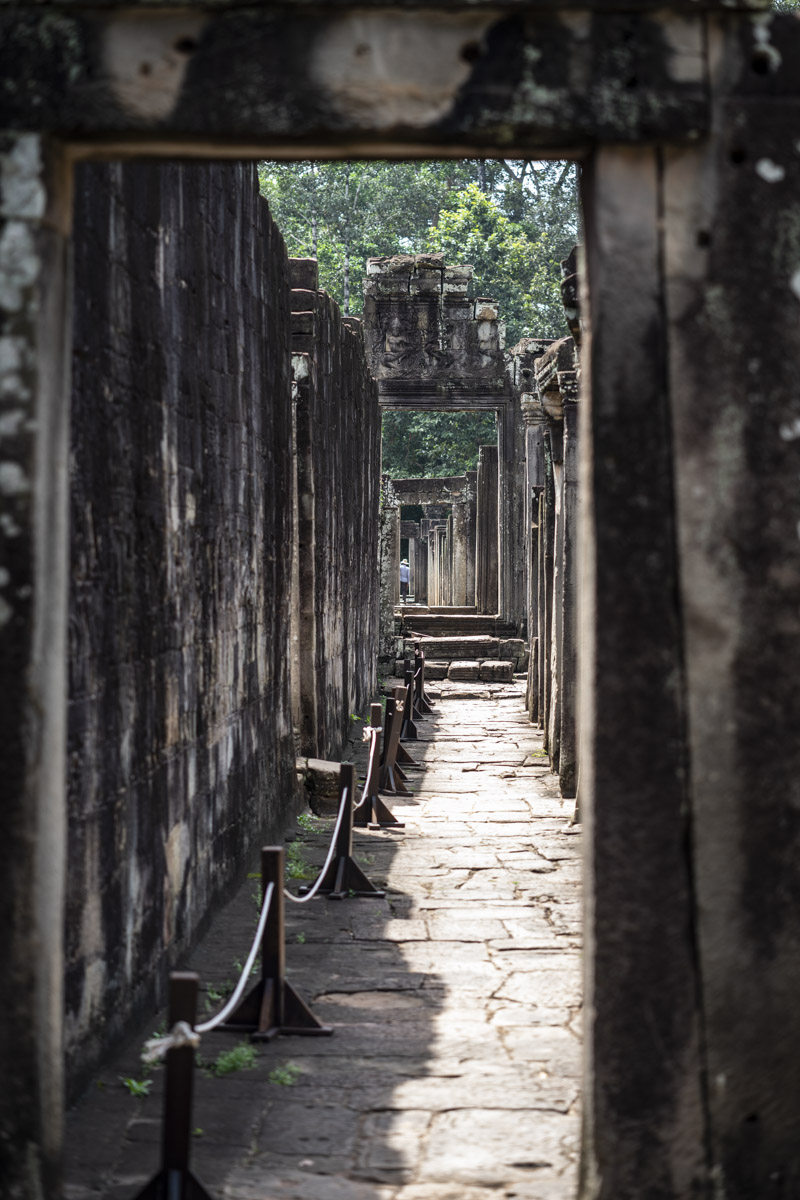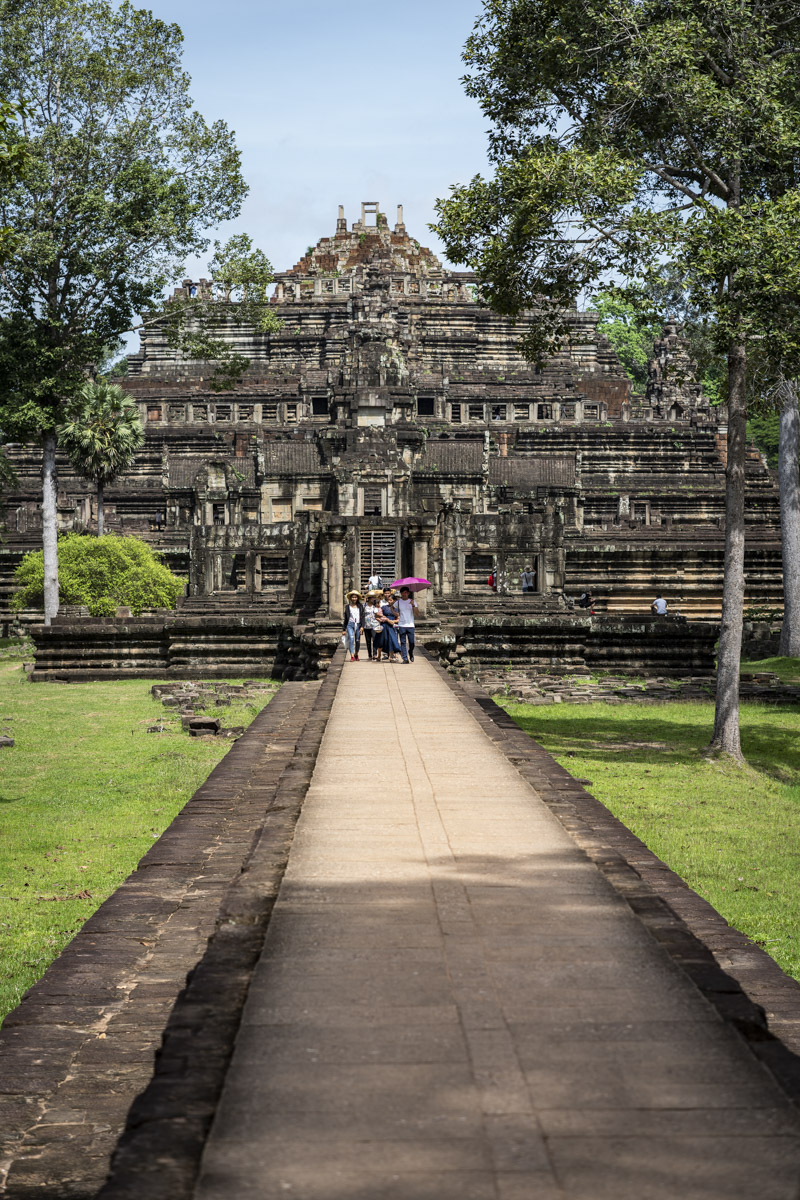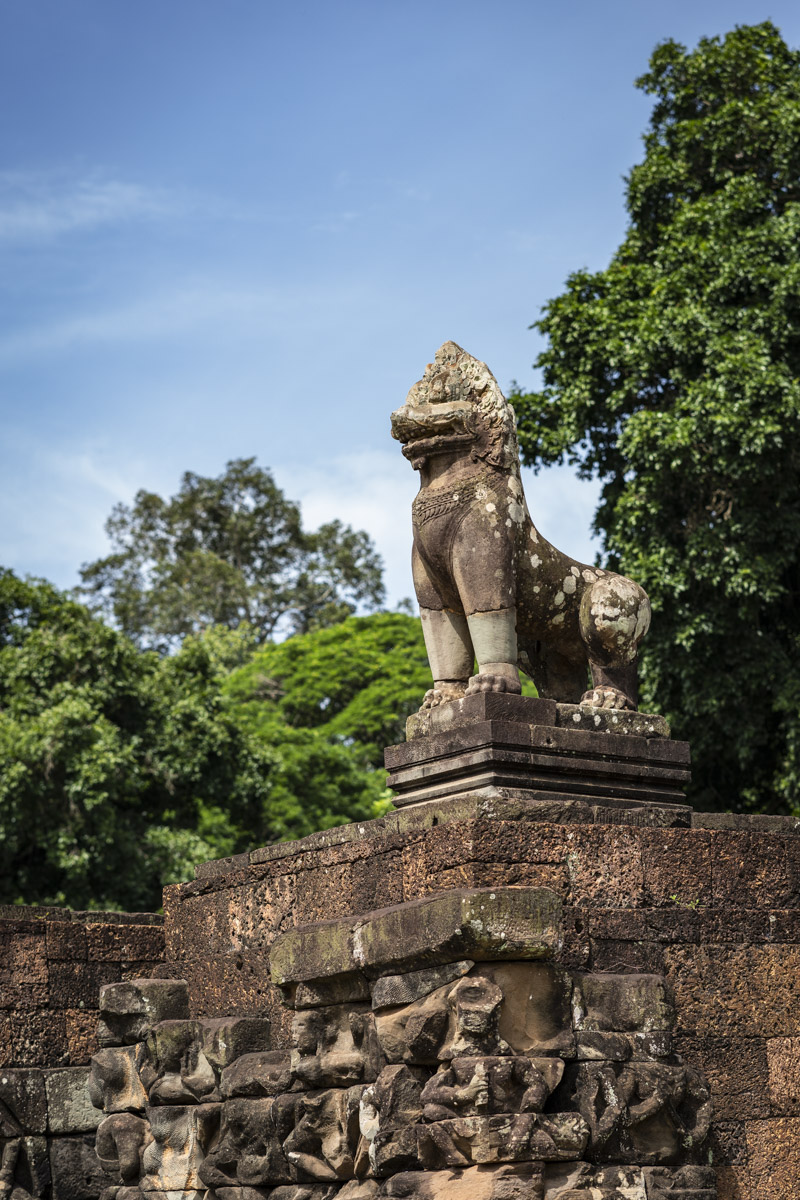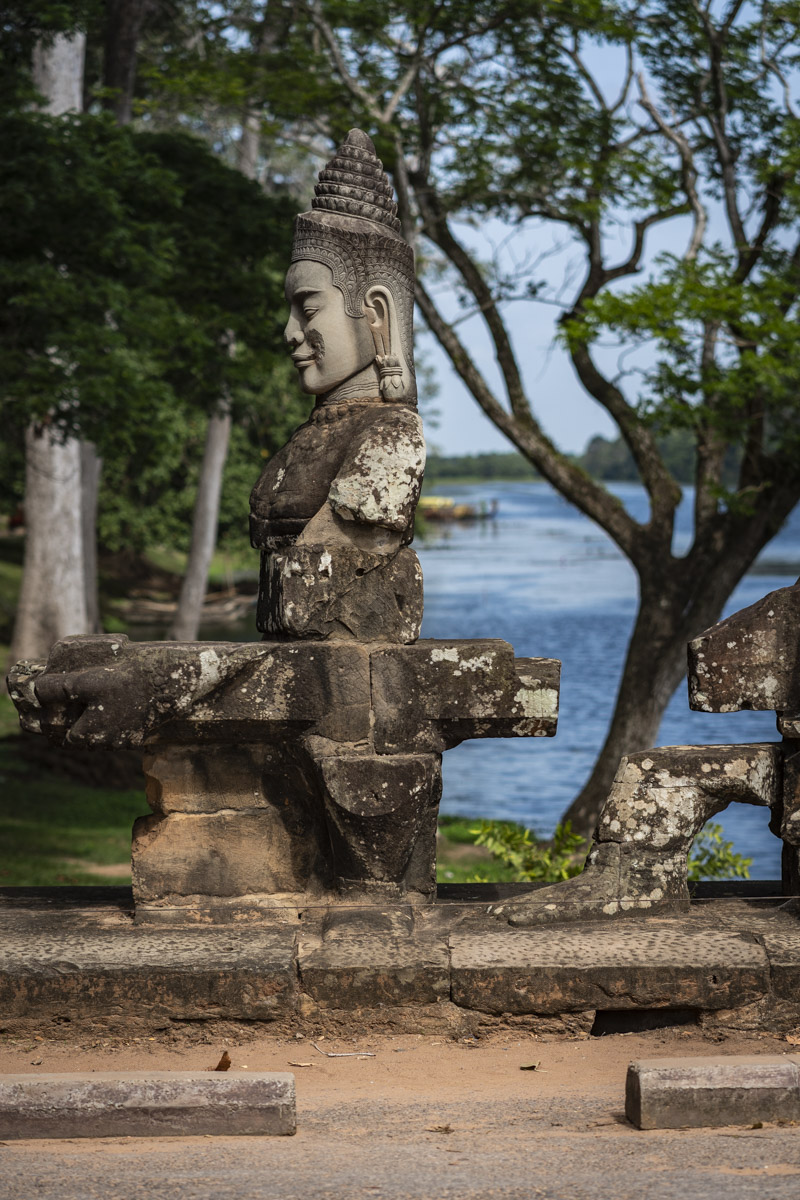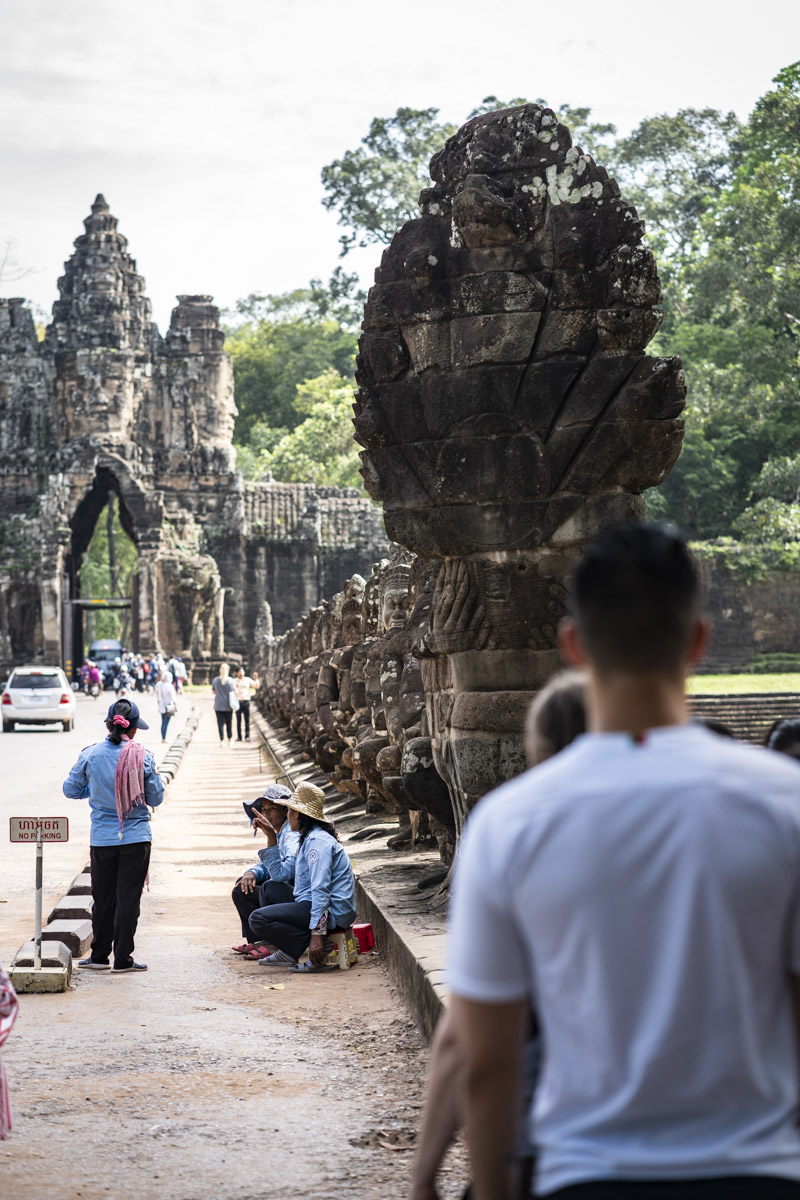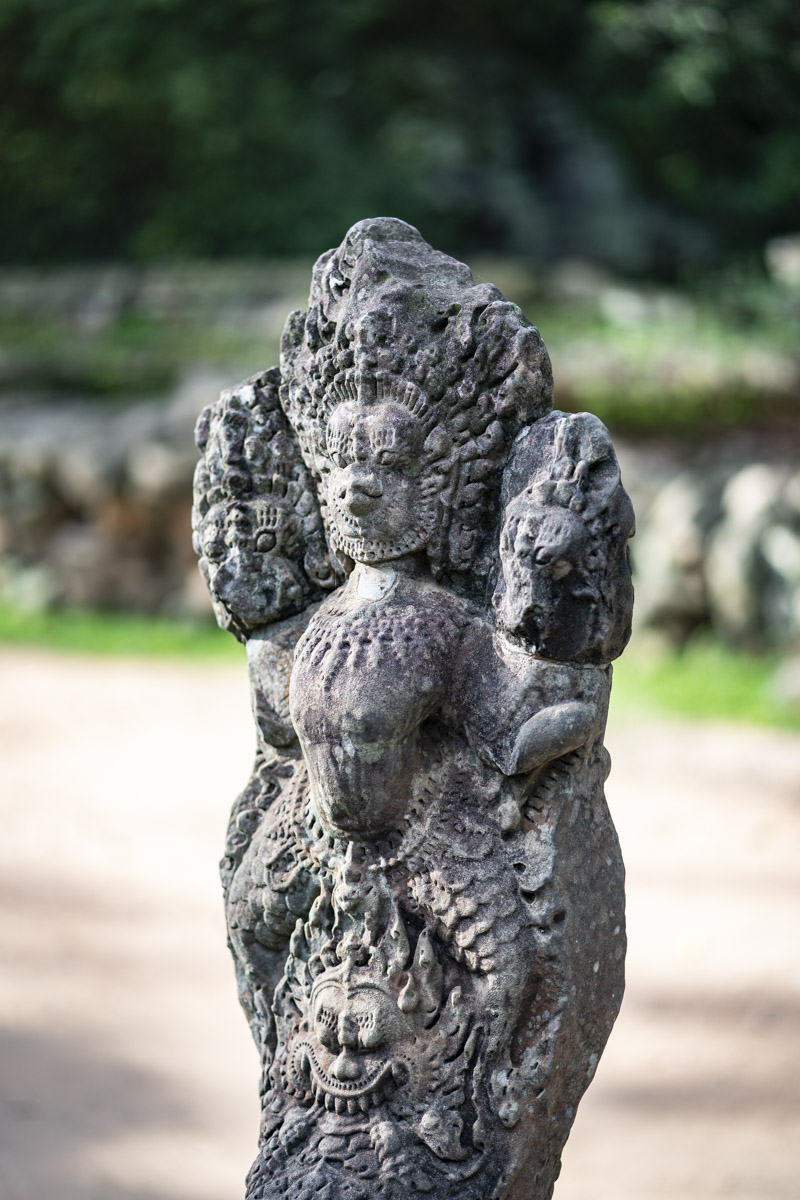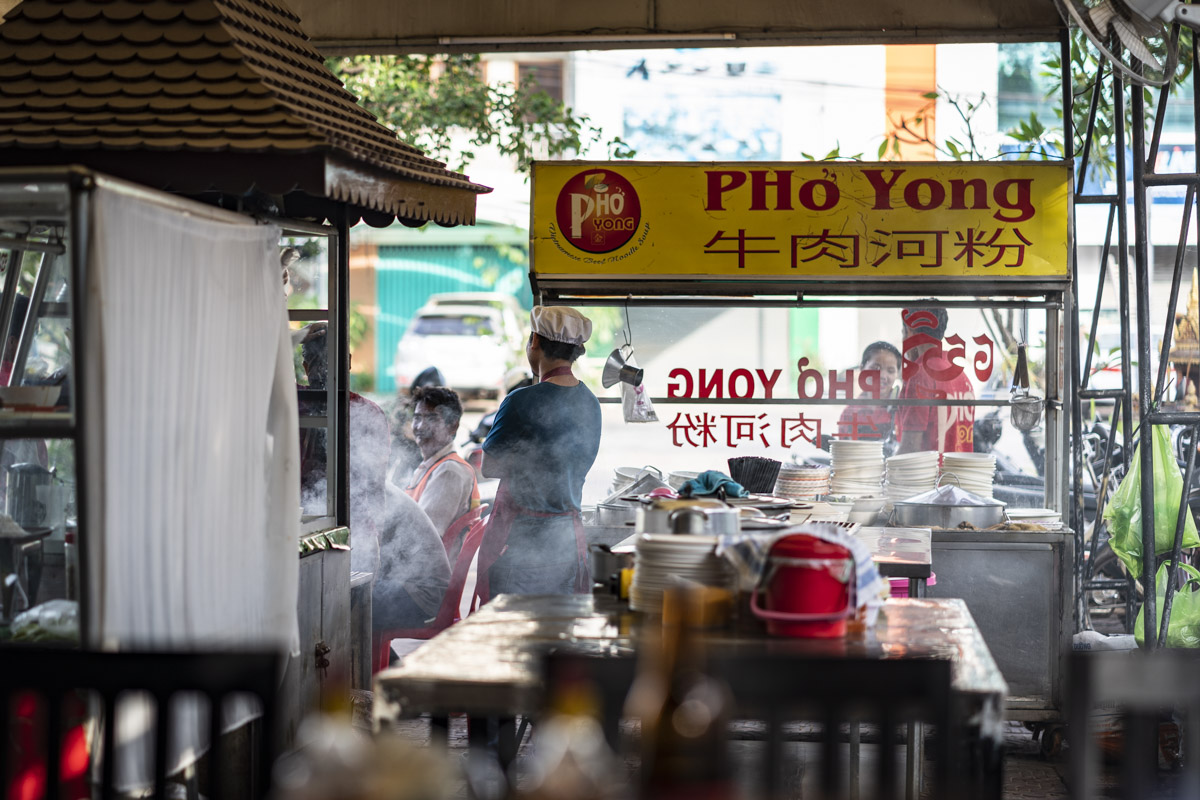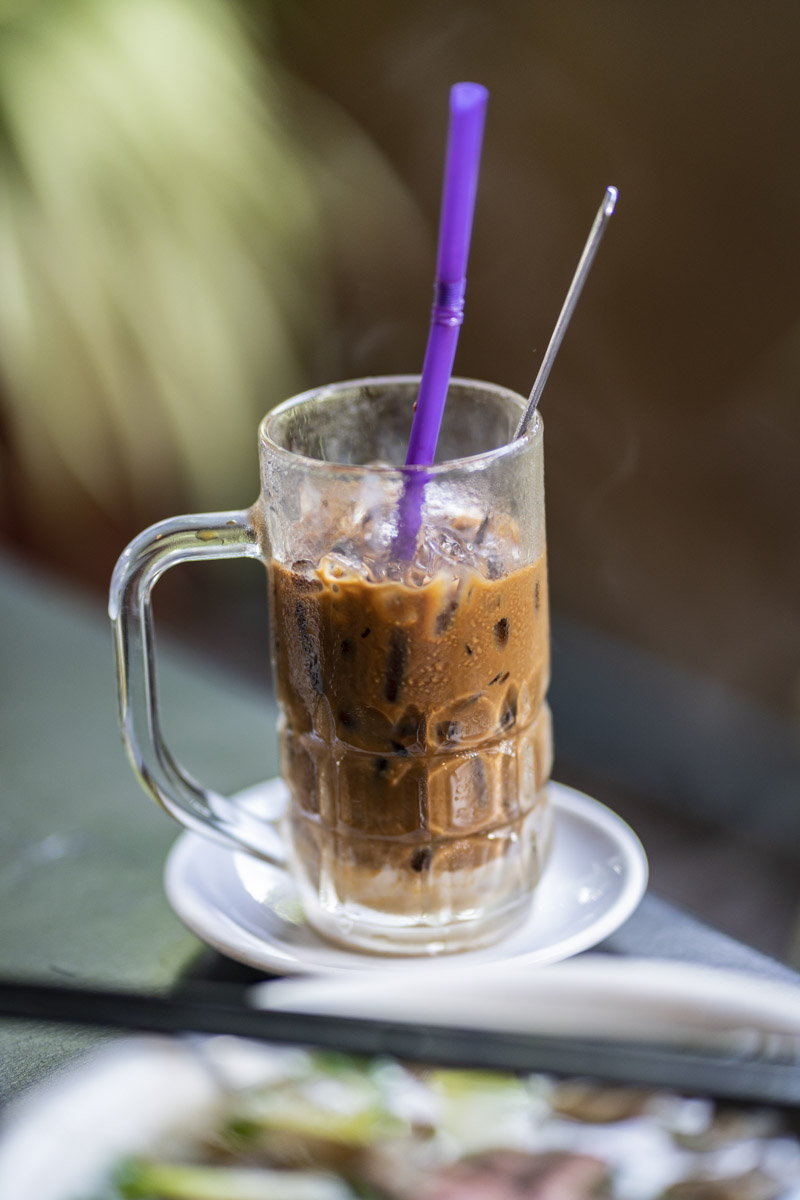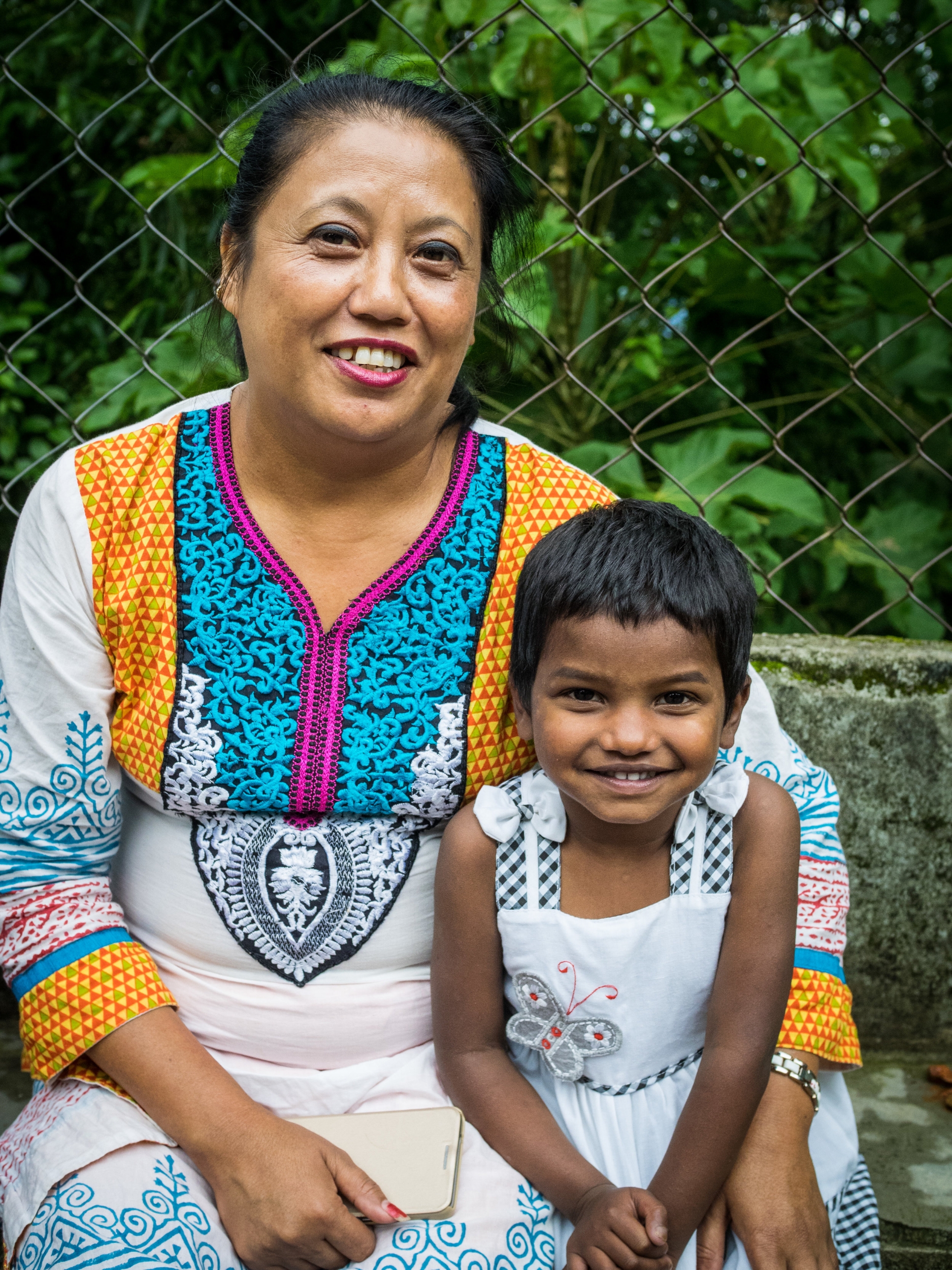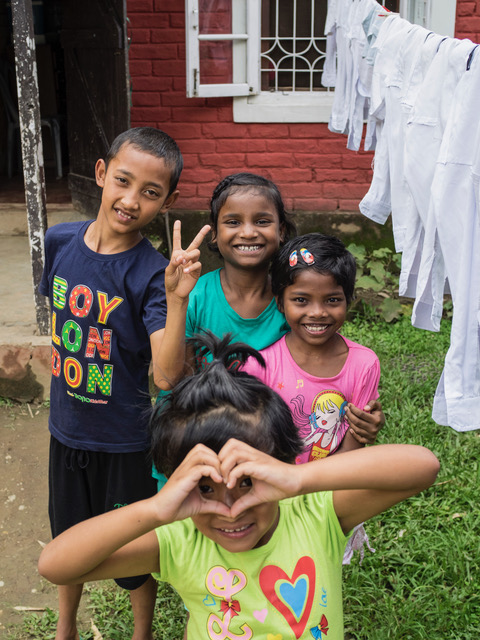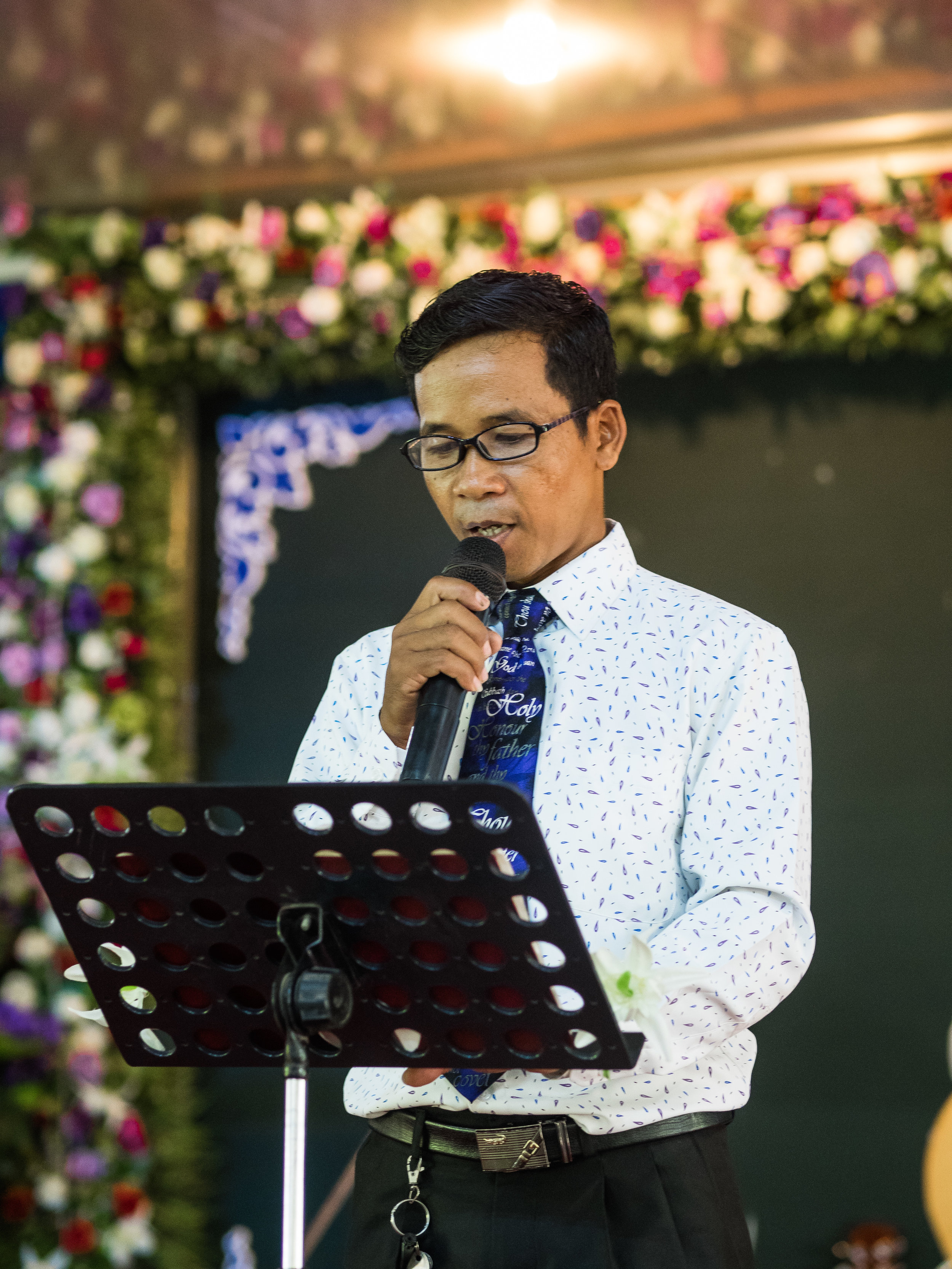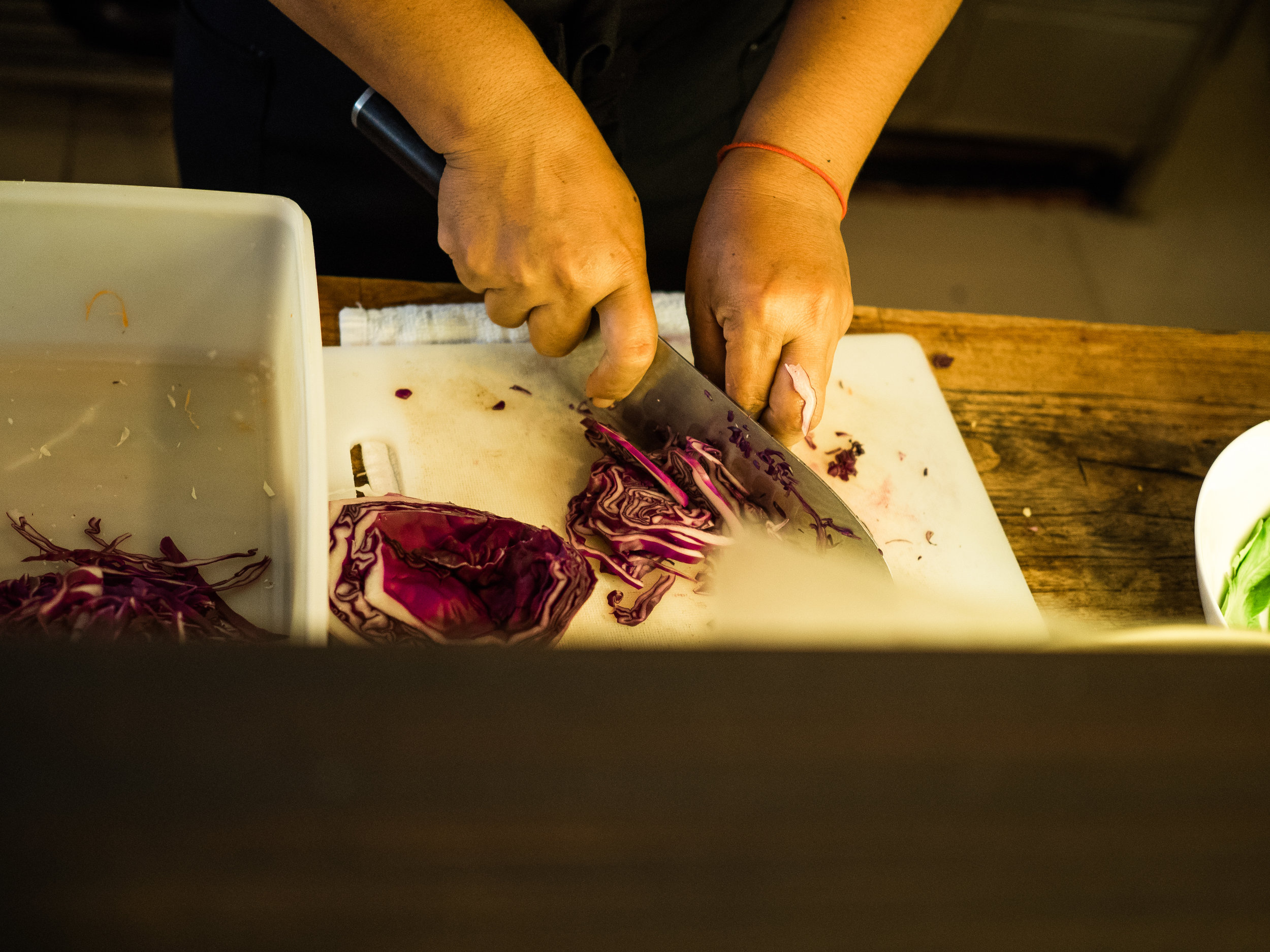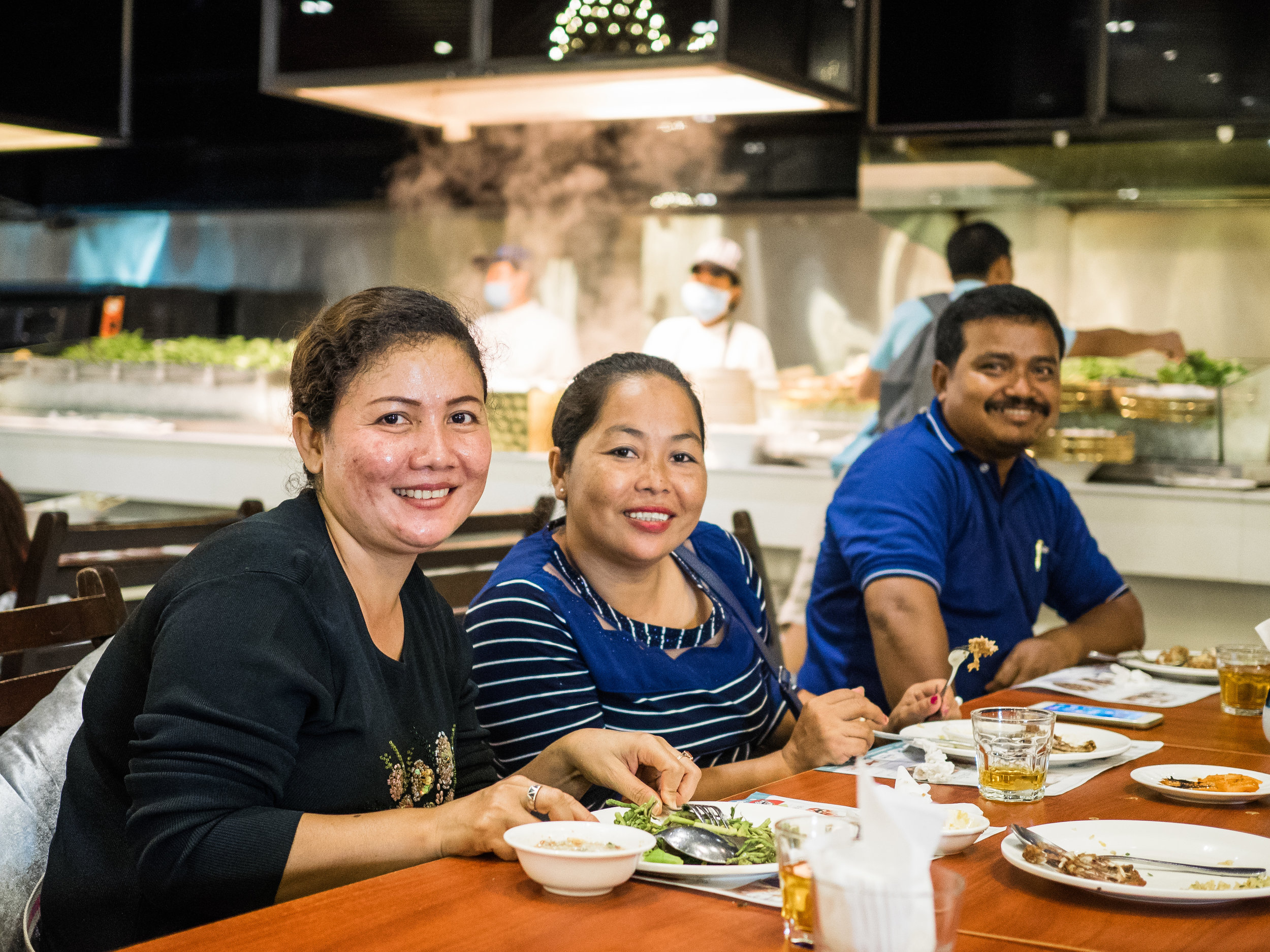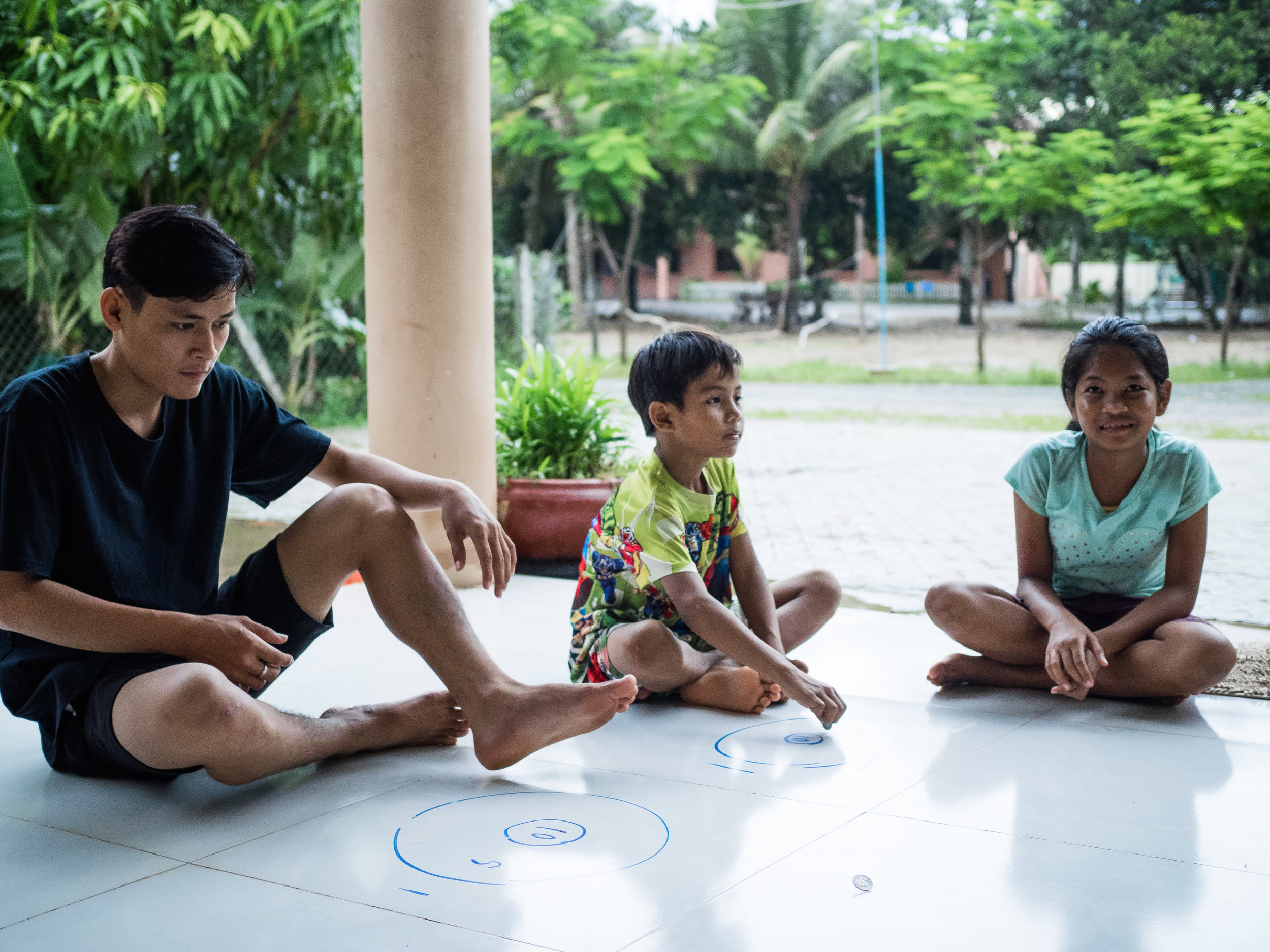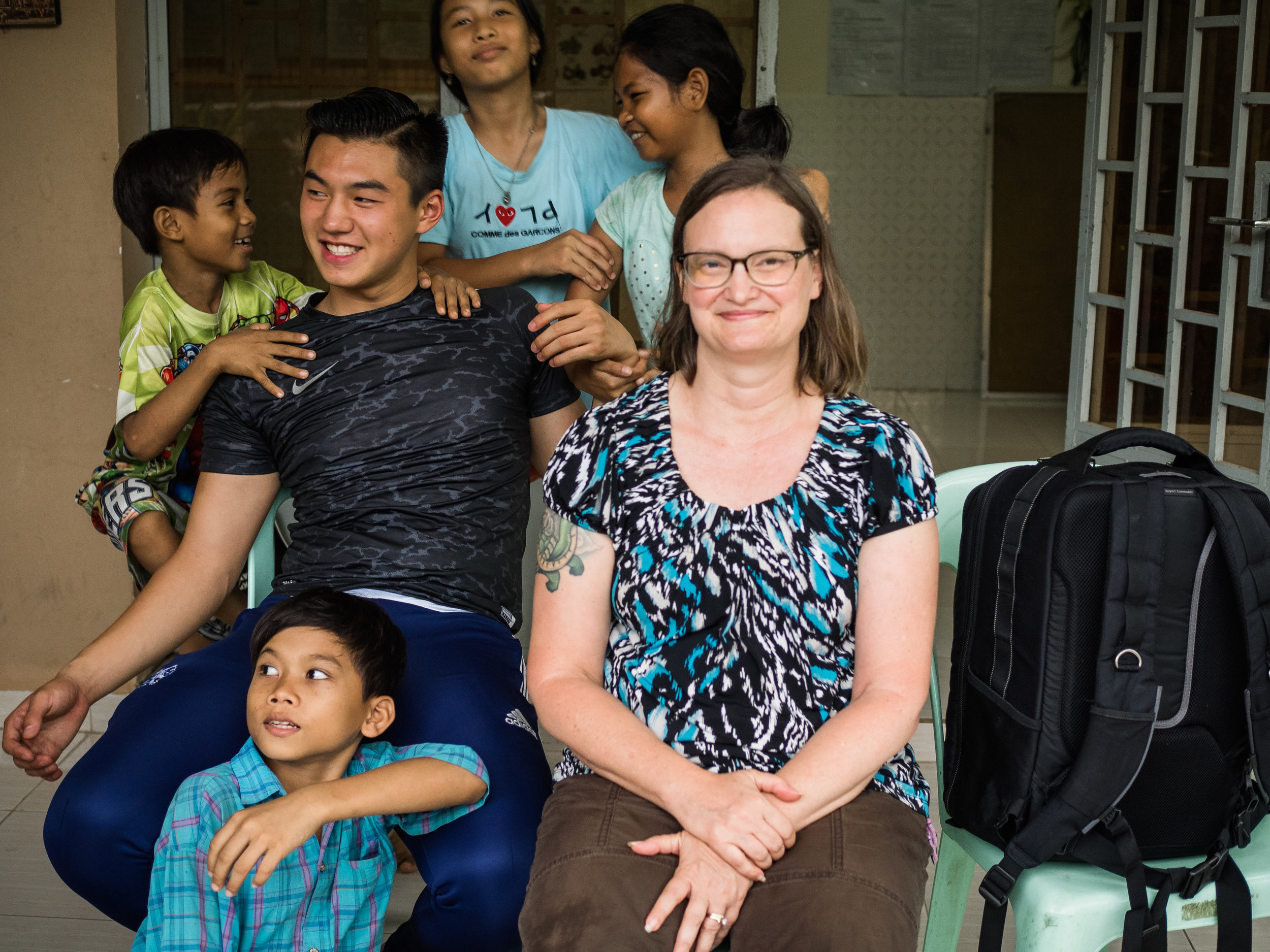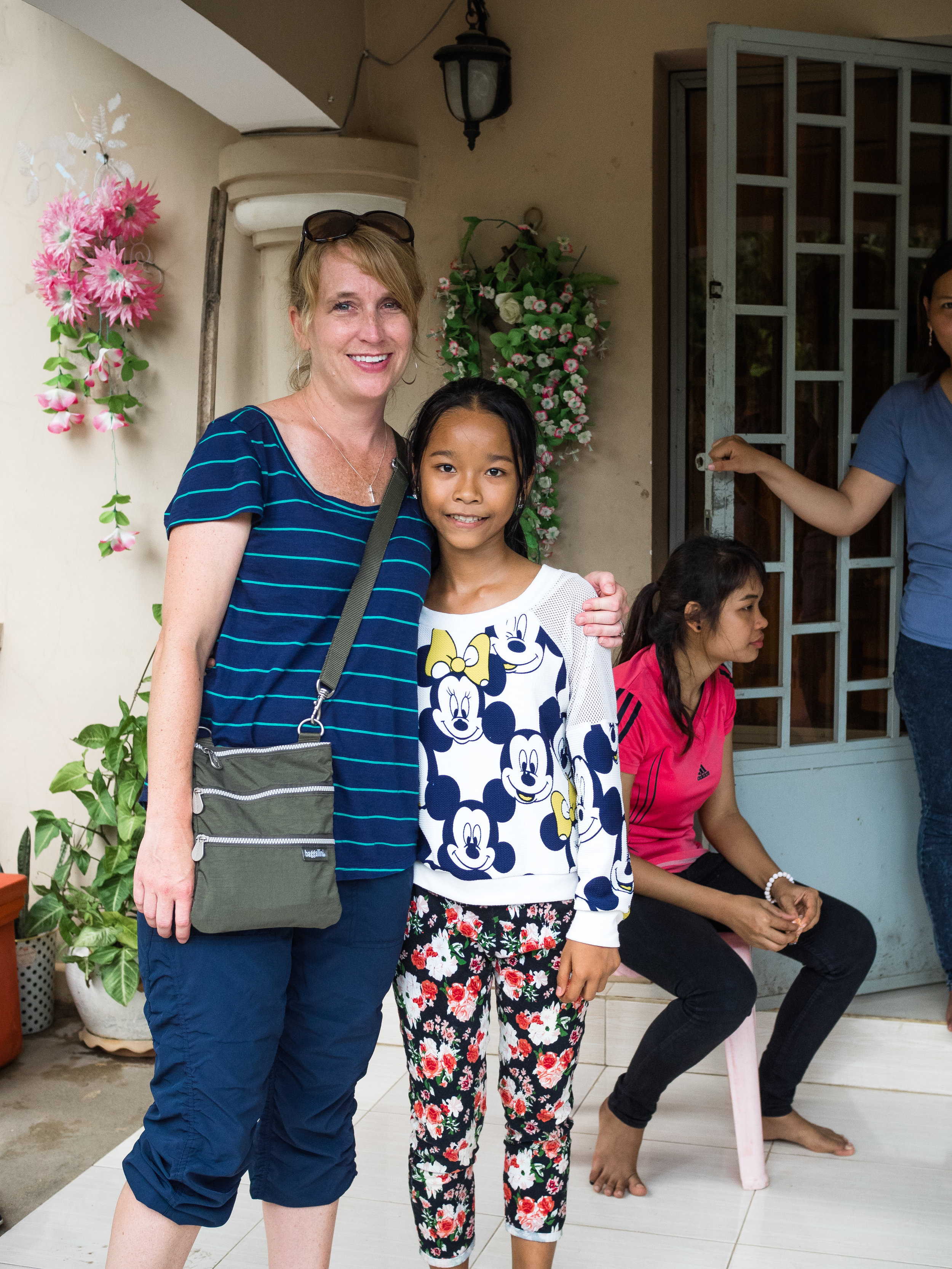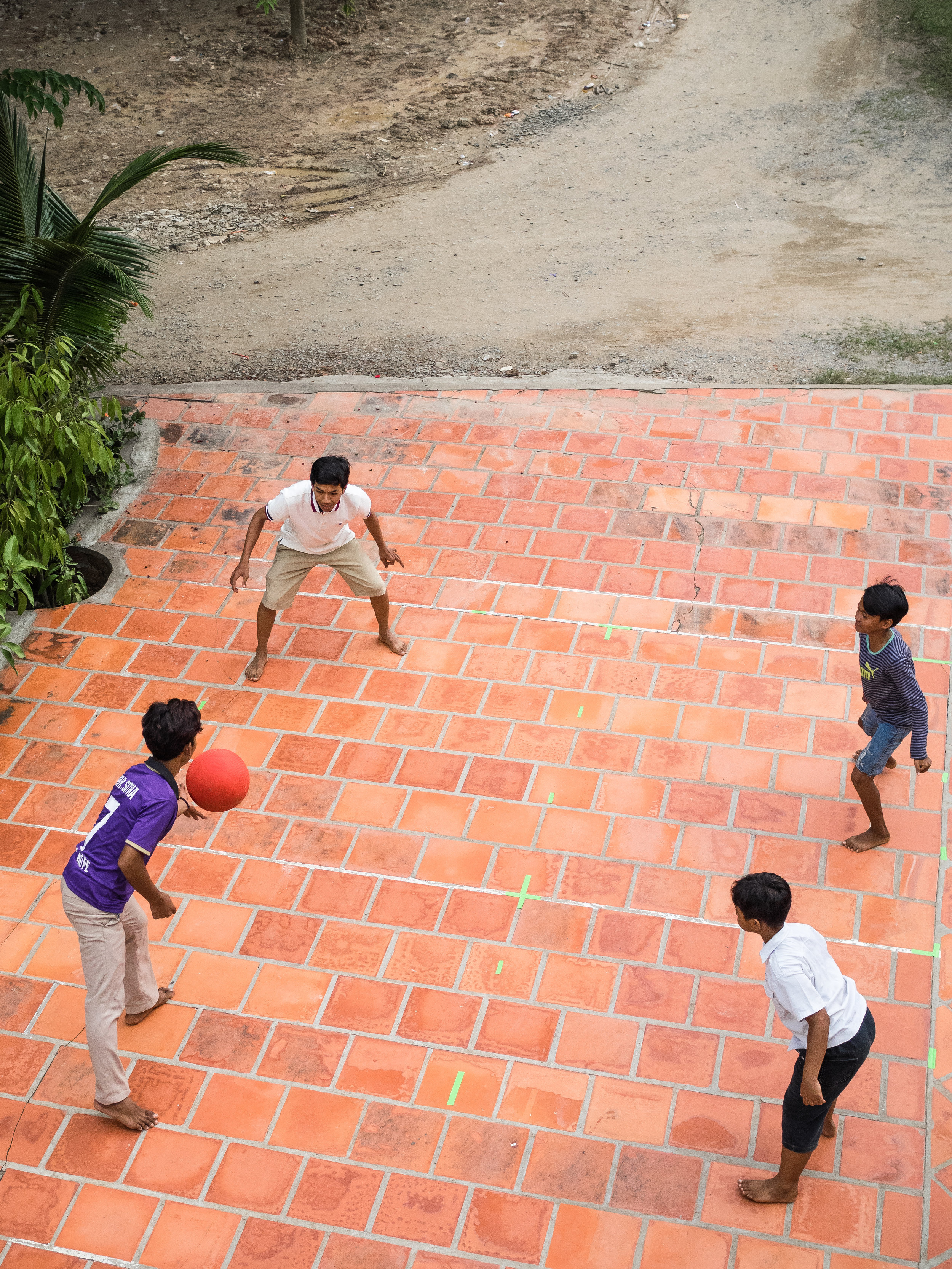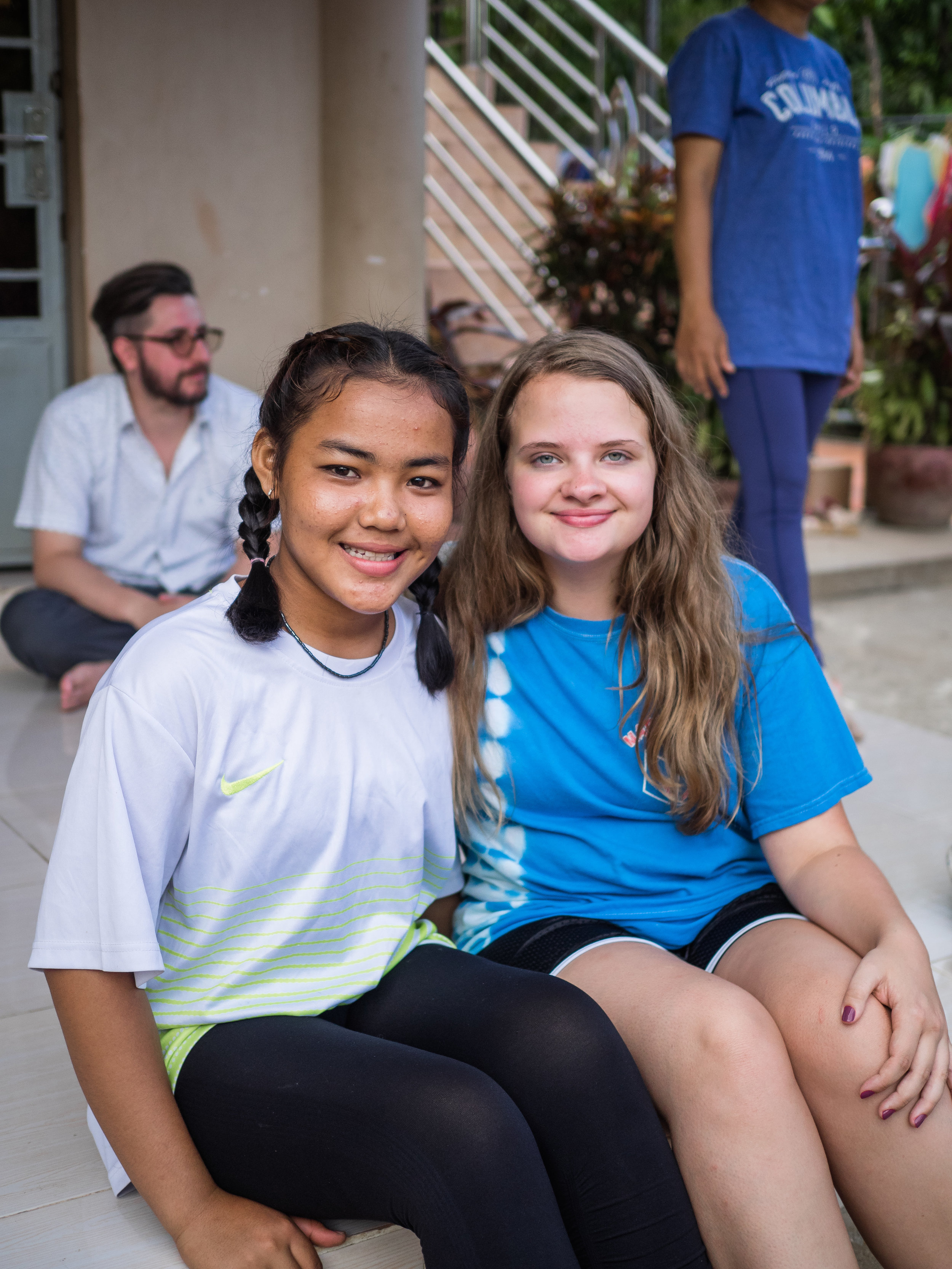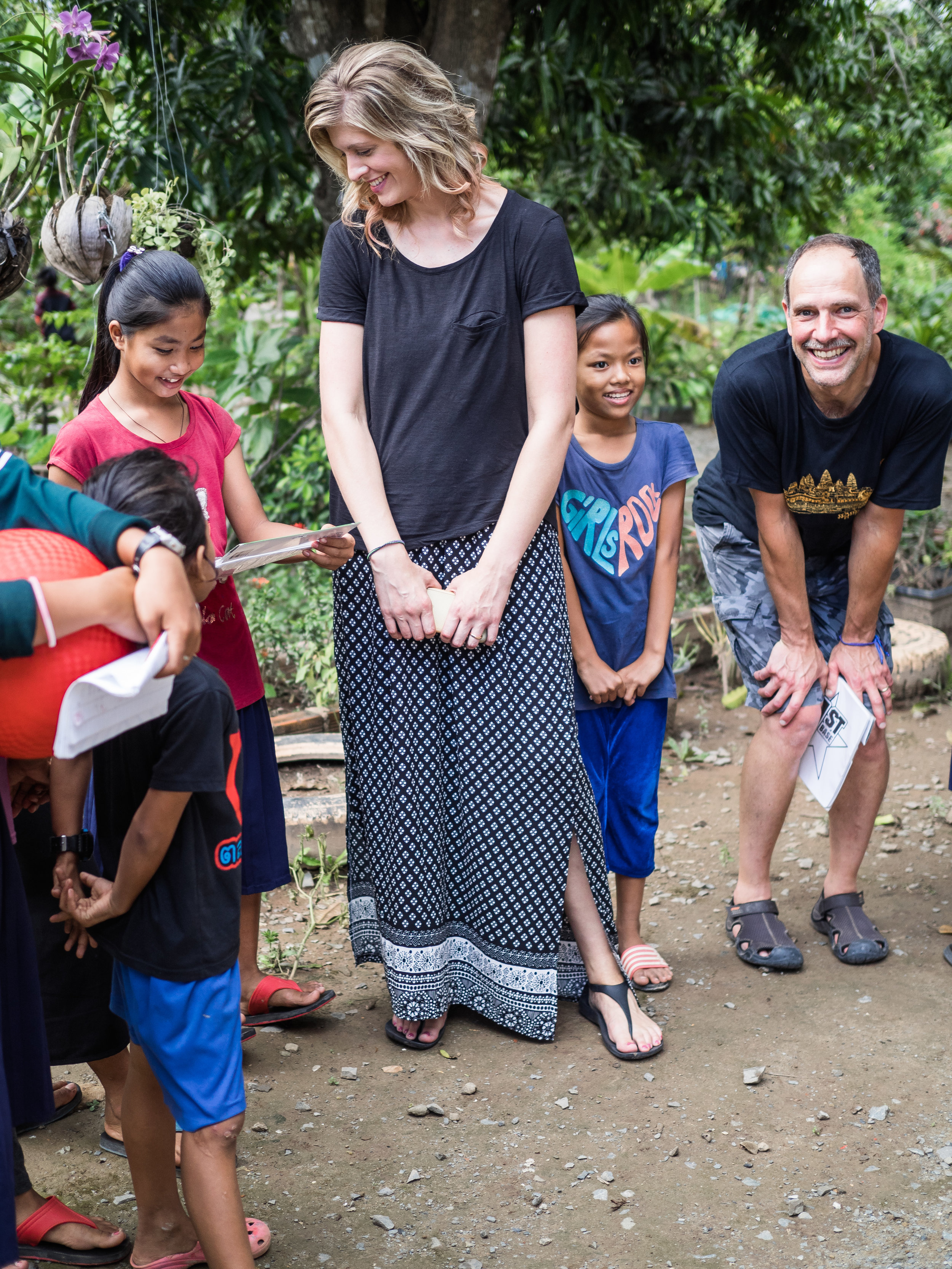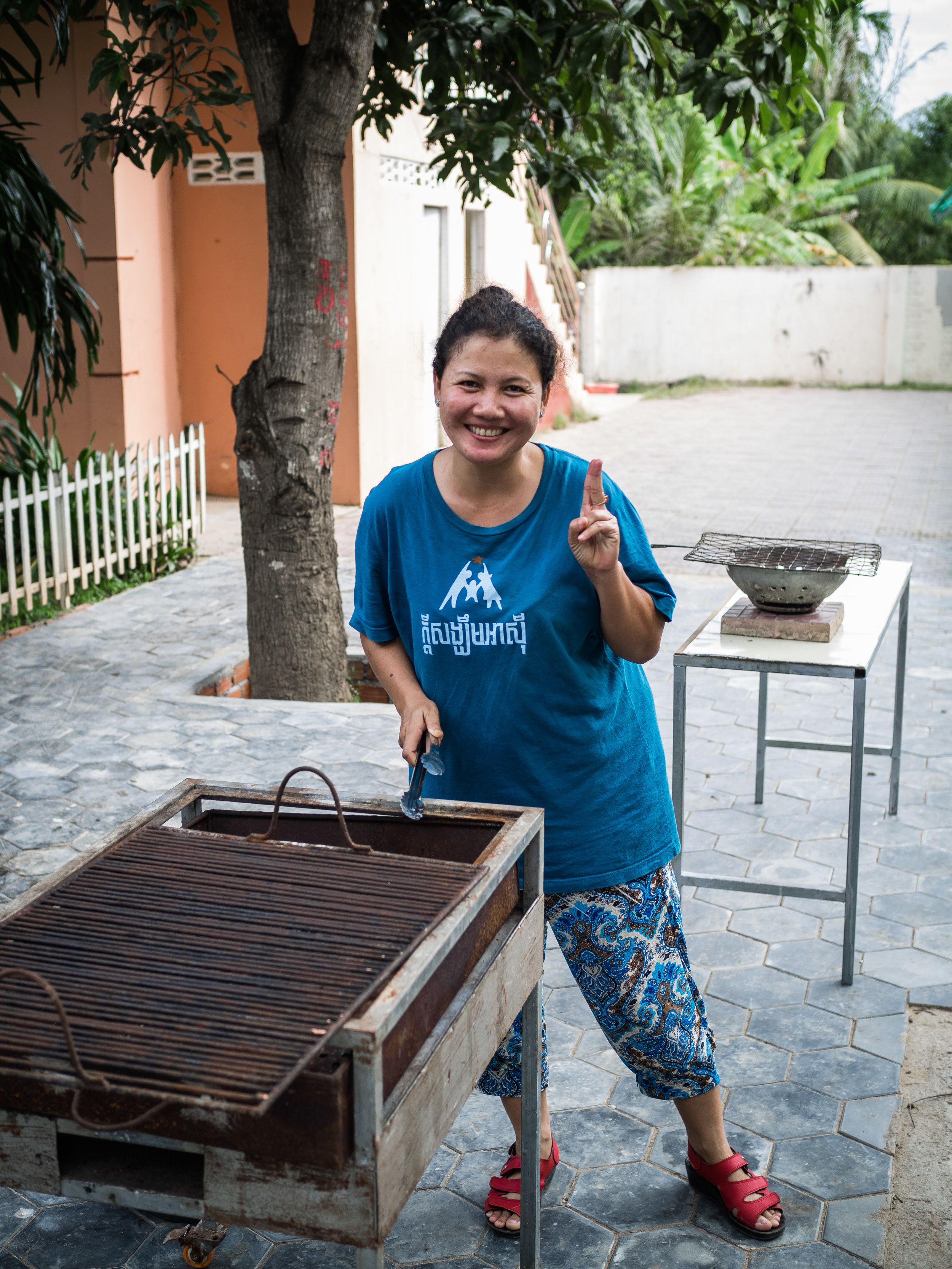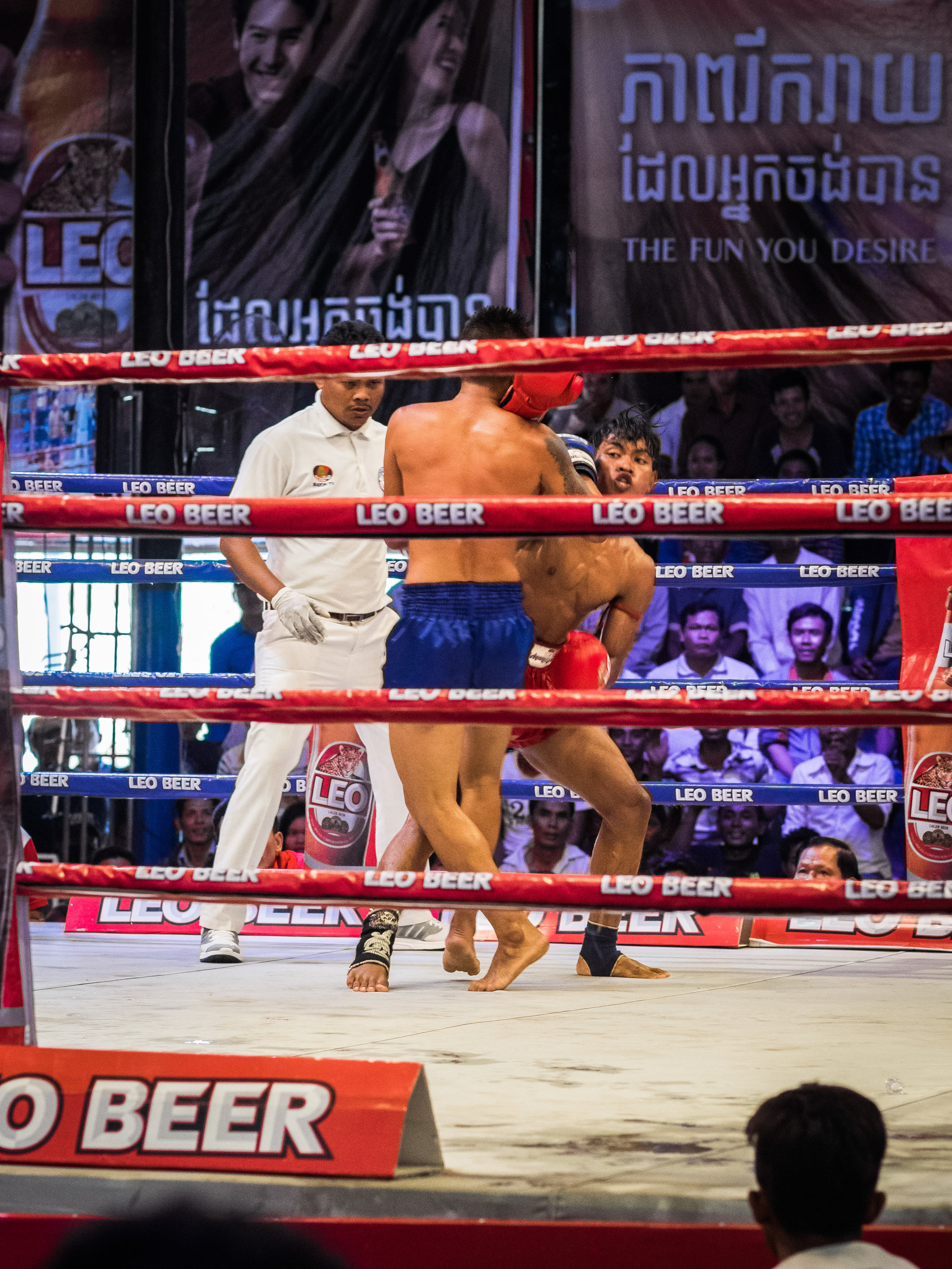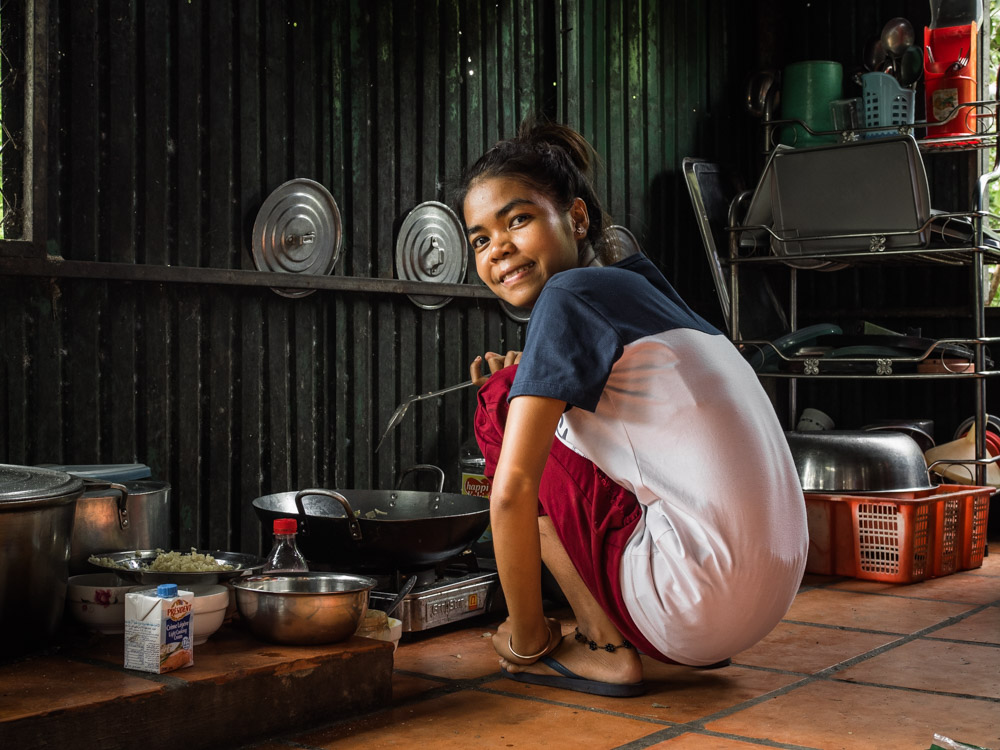It's Friday morning, and I'm finally feeling human after emerging from some monster cold/sinus infection/bronchitis thing that really dampened my ability to enjoy and engage much of anyone for about a week. I felt so lousy on Wednesday that I delayed my departure for Battambang by 24 hours. I stayed in bed most of the day and I think that was key to my recovery.
Yesterday morning my family checked out of our hotel in Phnom Penh, loaded into our borrowed van and made the five hour drive to Battambang, Cambodia's second-largest city. When I first visited Cambodia about 18 years ago, that drive would have taken something like 20 hours. The roads were often unpassable; the adjacent rice paddies were studded landmines, which are reported to be uncomfortable for vehicles and their occupants.
So for the first few years we flew into the city on rickety, reconditioned Aeroflot prop planes that burped and shuddered before landing with objectionable thuds and clanks on a single strip airfield, delivering us to a sweltering quonset hut where we rescued our terrified luggage and fled via taxi to the barely-air-conditioned and now defunct Te.O Hotel. Ah, the Te.O, with its questionable little restaurant, favored by drunken Cambodian military officials, presumably for its large stock of Johnny Walker Red and signature dishes like "Salad Bin Laden" and "Beef Tongue On Fire."
A few years later, the government had grudgingly improved Highway 5 to the point where a trip by car was manageable within, say, 9 hours. Sure, significant stretches of the road were unpaved and could have been improved by some light carpet bombing, but for teams of more than four or five people, driving represented a significant cost — and potential life — savings over flying.
Yesterday I made the trip in just under five hours. The entire way is paved, and it is now possible to find multiple rest stops with above-ground toilets. The city of Phnom Penh seems to stretch about an hour further into the former countryside, and the outskirts of Battambang extend far beyond its famous statue, which once marked the furthest boundary between semi-urban and really-rural. We've since upgraded our hotel, and can now choose from well over a dozen really good restaurants.
This morning I'm sitting on the second-floor balcony of the Kinyei Cafe, enjoying a perfectly-made small flat white with an extra shot of espresso. Kinyei is owned by my friends Marc and Jose, who also own Phnom Penh's Feel Good cafes and roasters. It sits at the quiet end of Street 1-1/2, adjacent to a couple Colonial-era shophouses that, to the utter bafflement of my Cambodian staff, I fantasize about purchasing, rehabbing and turning into a retirement home cum AirBnB. Most locals prefer the glitzier Starbucks-style "Brown Coffee" franchise stores and new-build condos, but I'm a sucker for the wood shutters, faded stucco and exposeable brick of the century-old buildings that probably indicate some latent Orientalist exotification bias. For that, I'm profoundly sorry-not-sorry. You can take the boy out of America, but...
Anyway, after checking into our hotel, we took a short rest and then headed out to visit our Battambang campus. It too has changed over the past few years. A lot. I remember when we first purchased the original parcel of land. It was out in the middle of the country, flanked by nothing but farmland. Even after adding our first few homes, arriving at Asia's Hope was something like discovering the Others' settlement in the TV series Lost — a tiny community thriving surprisingly in the middle of nowhere.
It's now on its way to being in something like the center of Battambang proper. We've since bought up all the available abutting plots, and have filled them with 13 homes, a church, a vocational training center, a middle and high school and one of the best soccer fields in the city. The surrounding land has all been purchased by developers, and is slated for condos, shops and God-knows-whatelse. Our campus remains, however, an oasis of joy and even tranquility in an otherwise chaotic hurly-burly of rapid economic and demographic expansion. There, kids whose parents died, abandoned them or simply turned up missing have found new life, new hope and new families. They tend gardens, play sports, learn musical instruments, attend schools and enjoy delicious meals cooked for them by dedicated parents who know their names, and tend to their emotional and spiritual traumas with a patience born of their own healing and deliverance from childhoods marred by genocide, civil war and life in refugee camps.
One thing that hasn't been radically transformed in Battambang over the last couple of years seems to be my ability to get a decent internet connection, so my posts may be a bit sparse. But I'll try to make up for that by uploading some big galleries when we get to Thailand next week.

